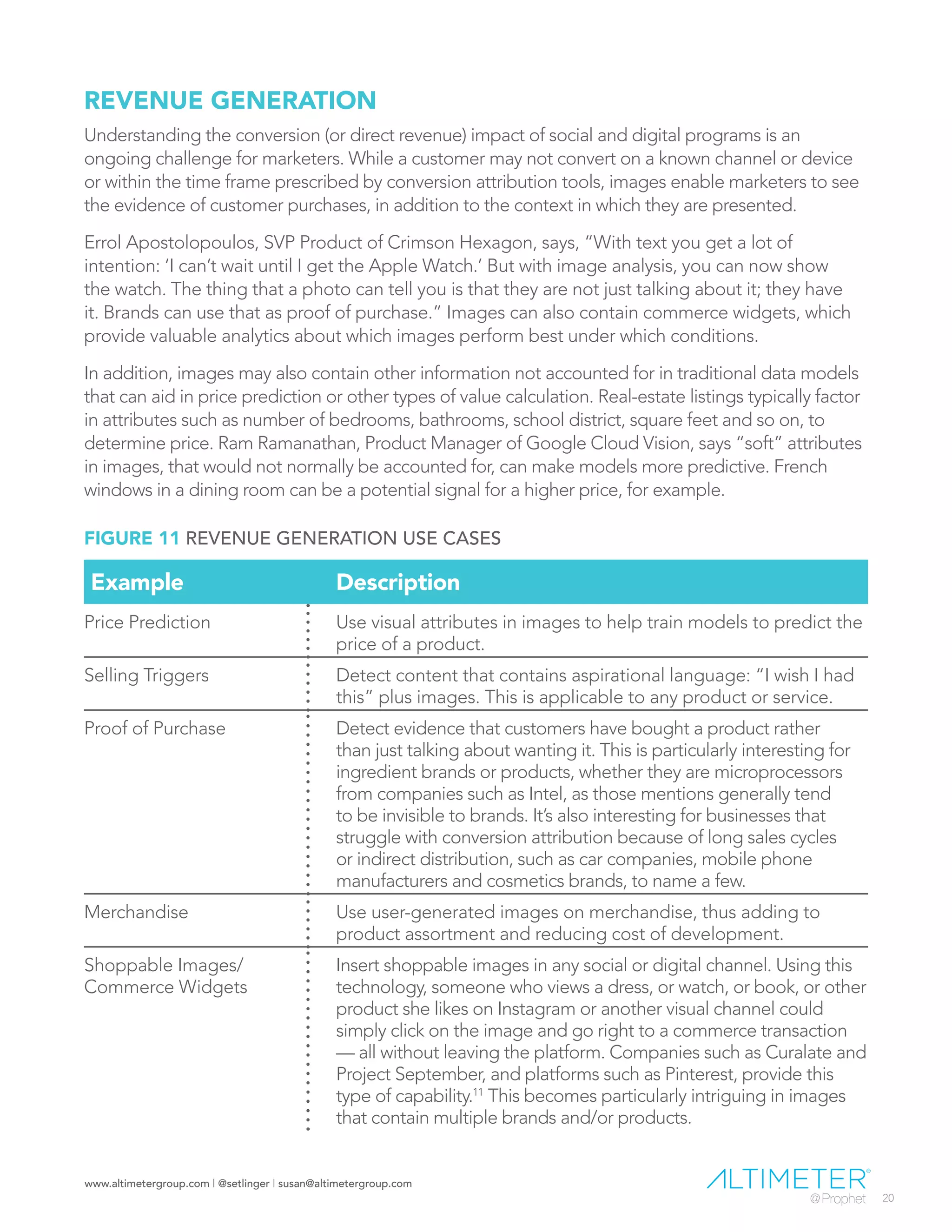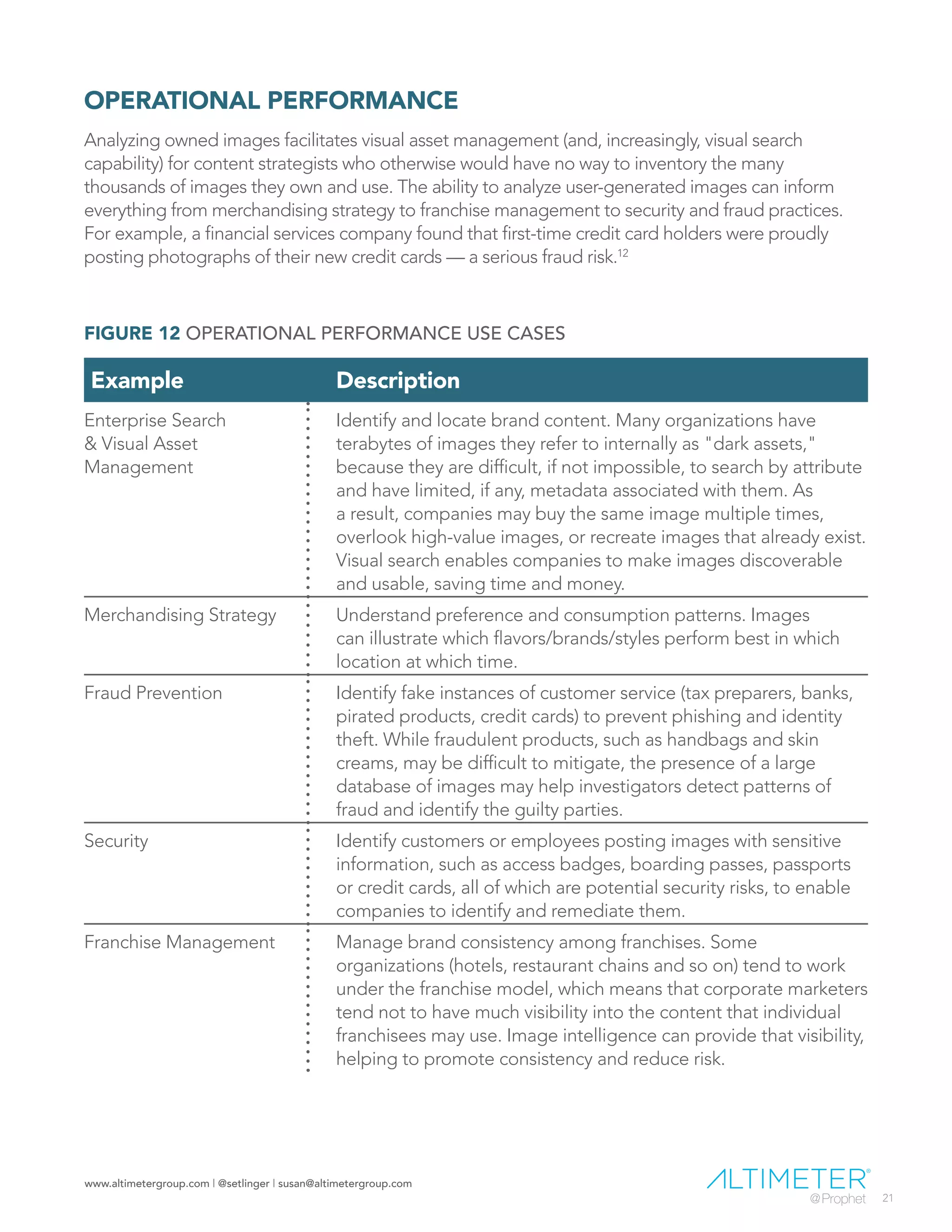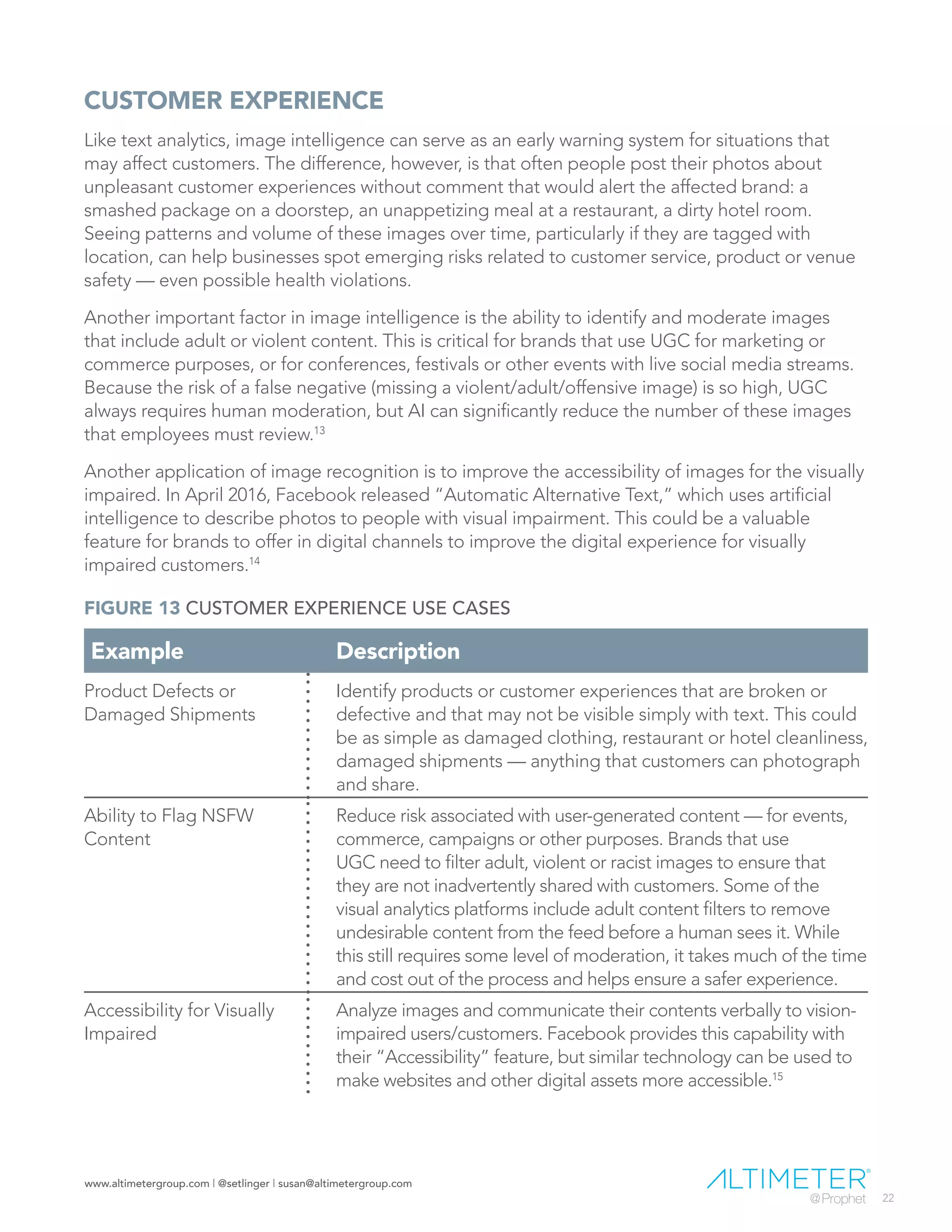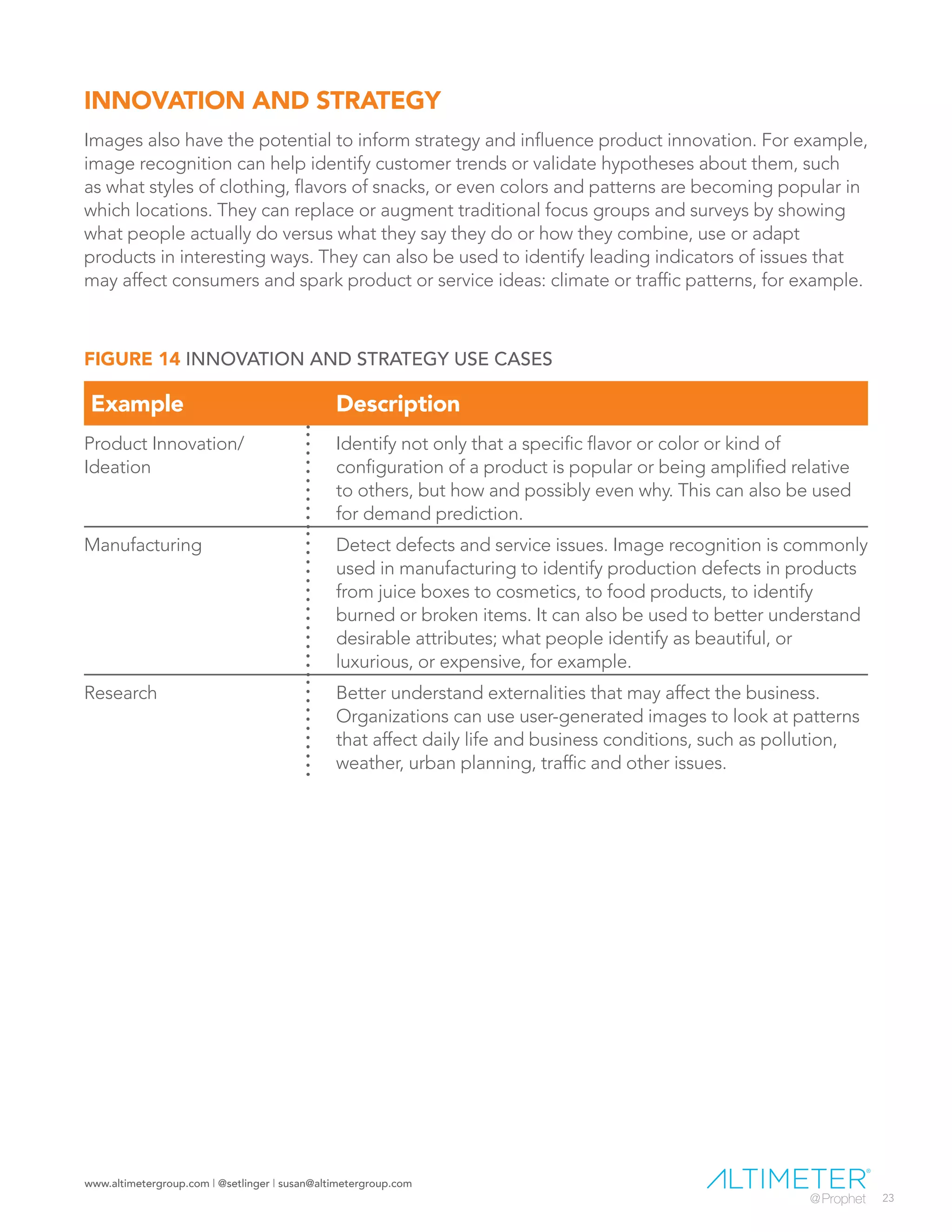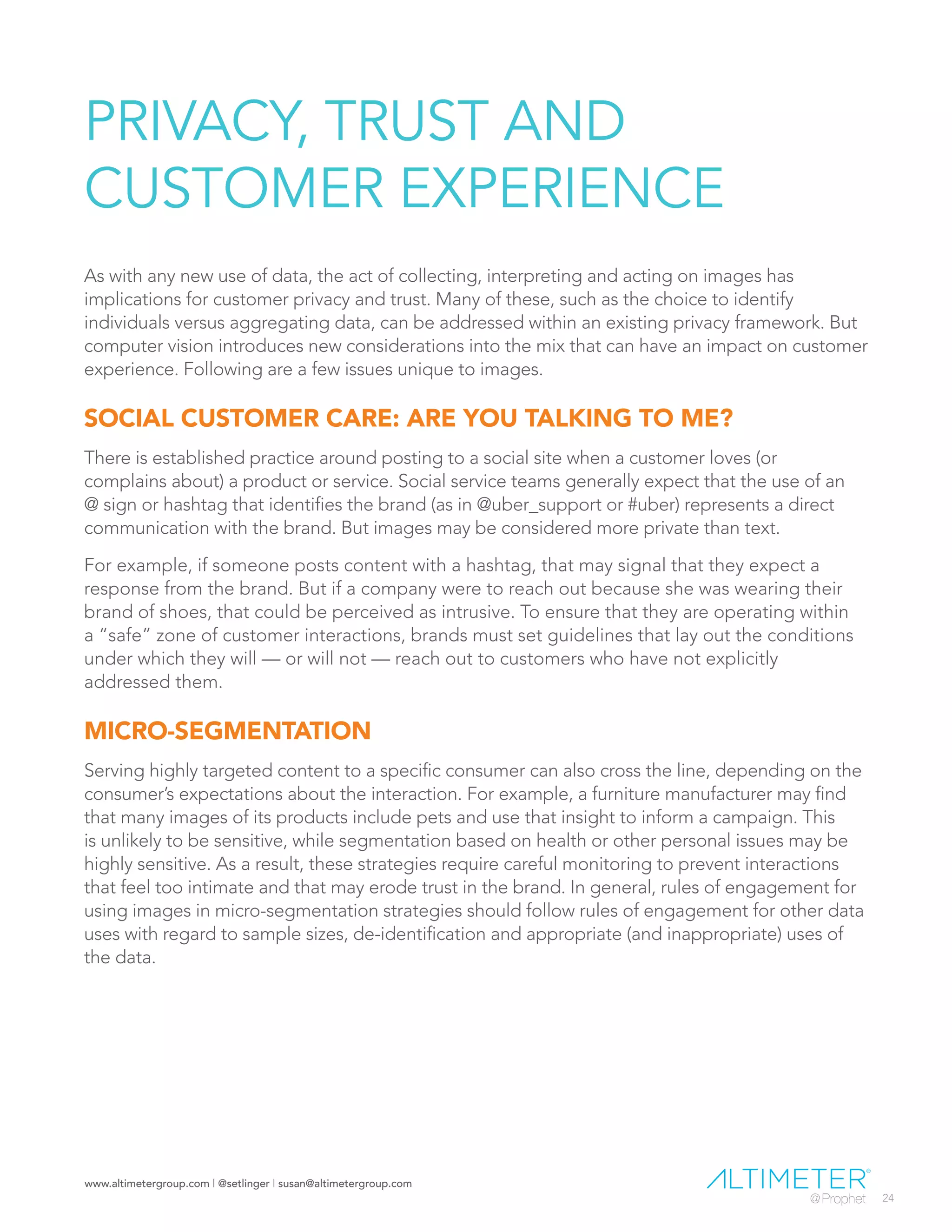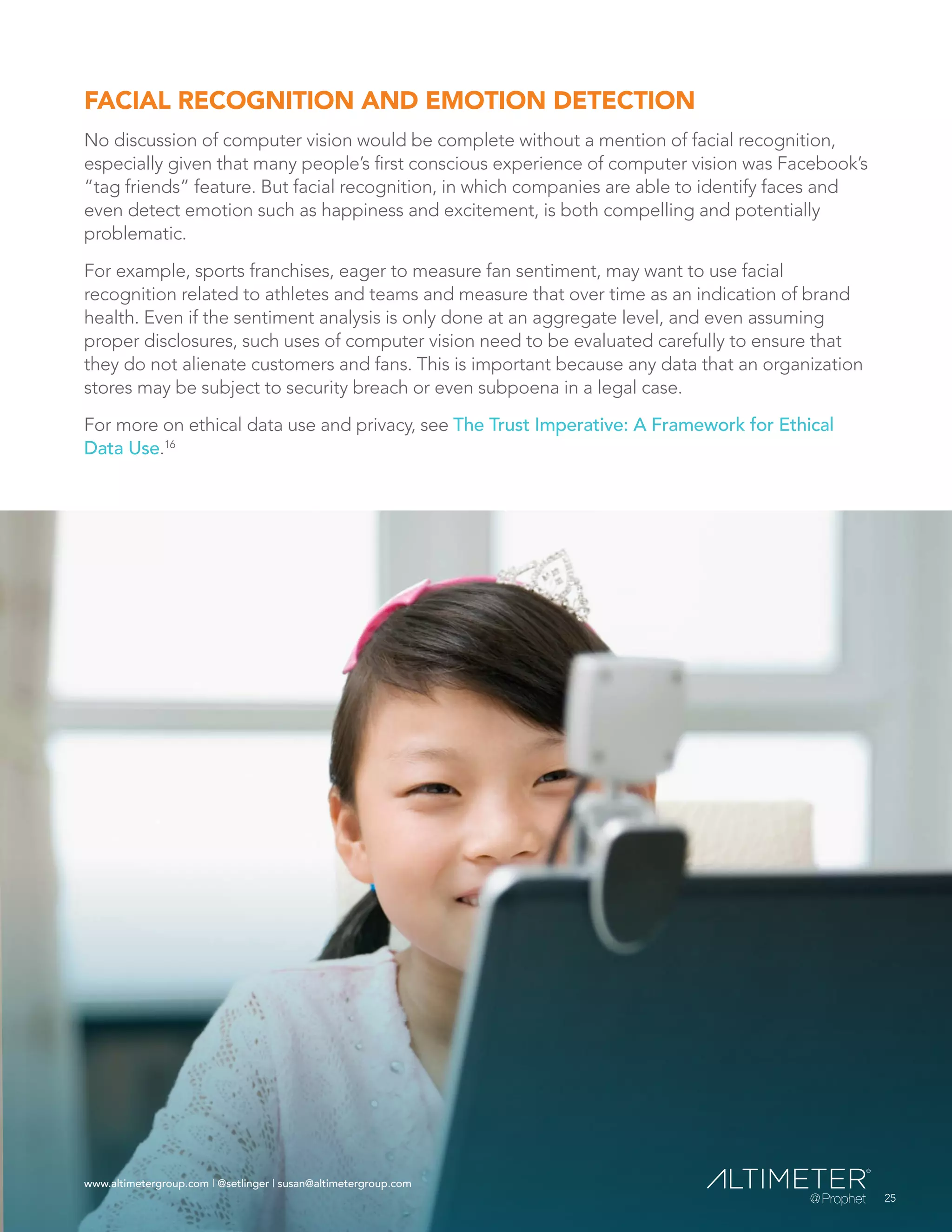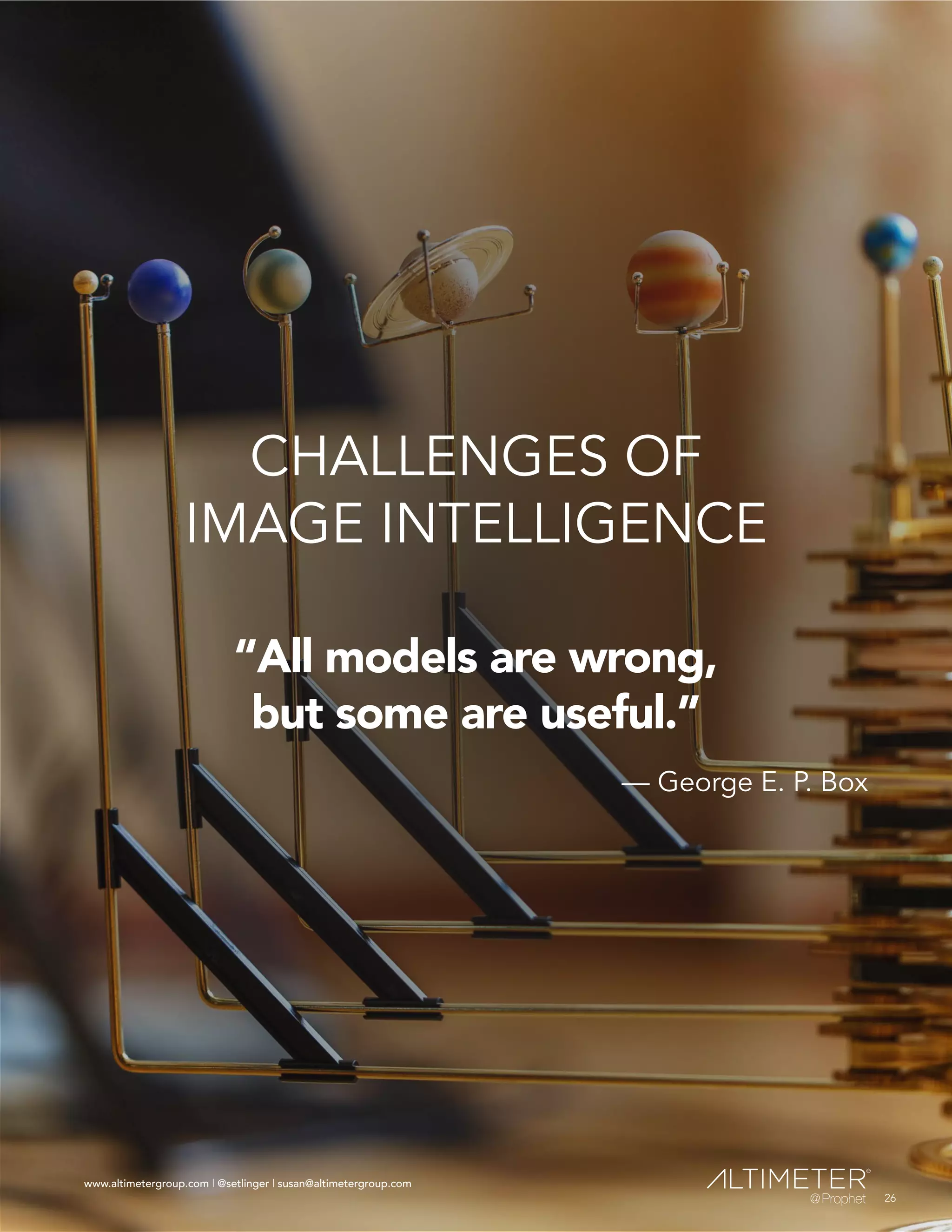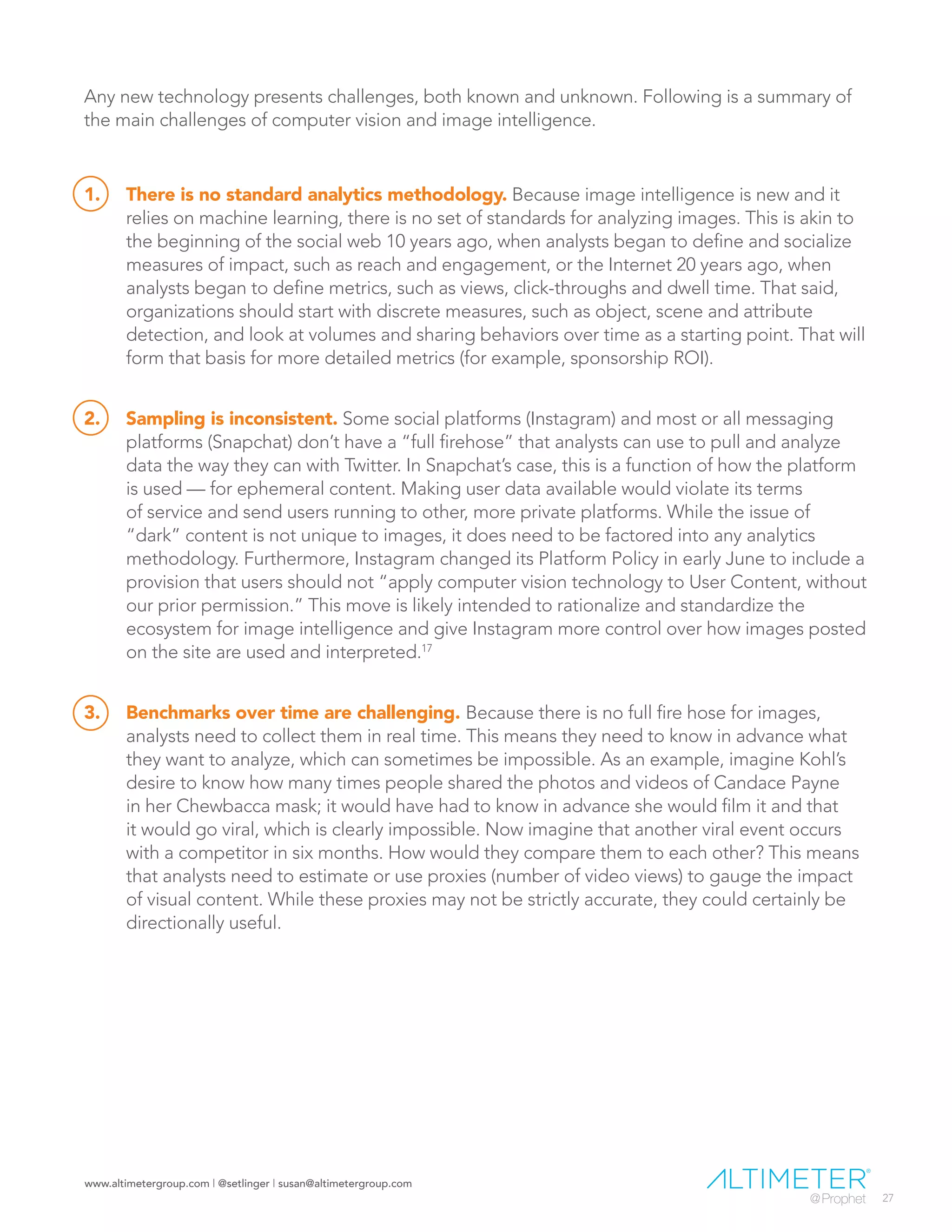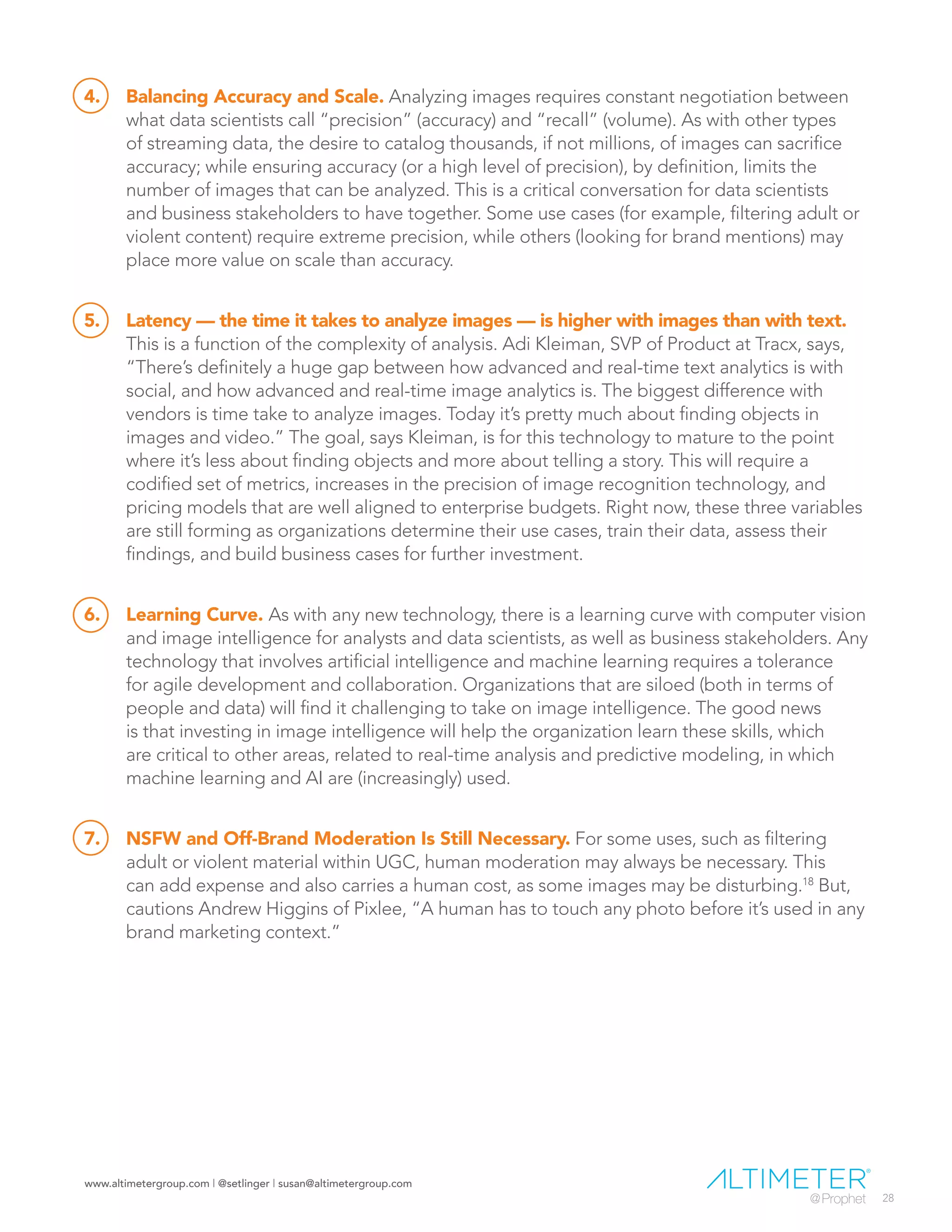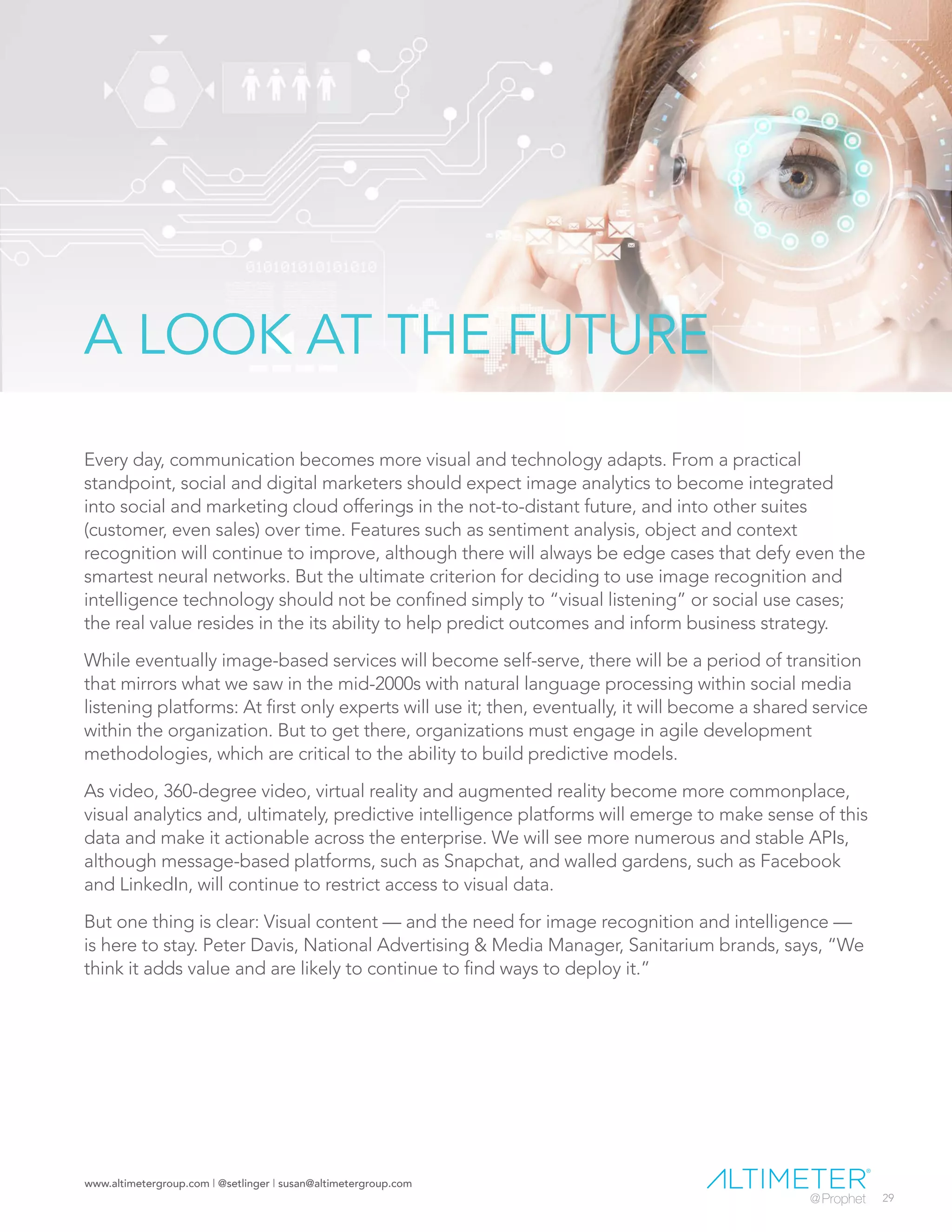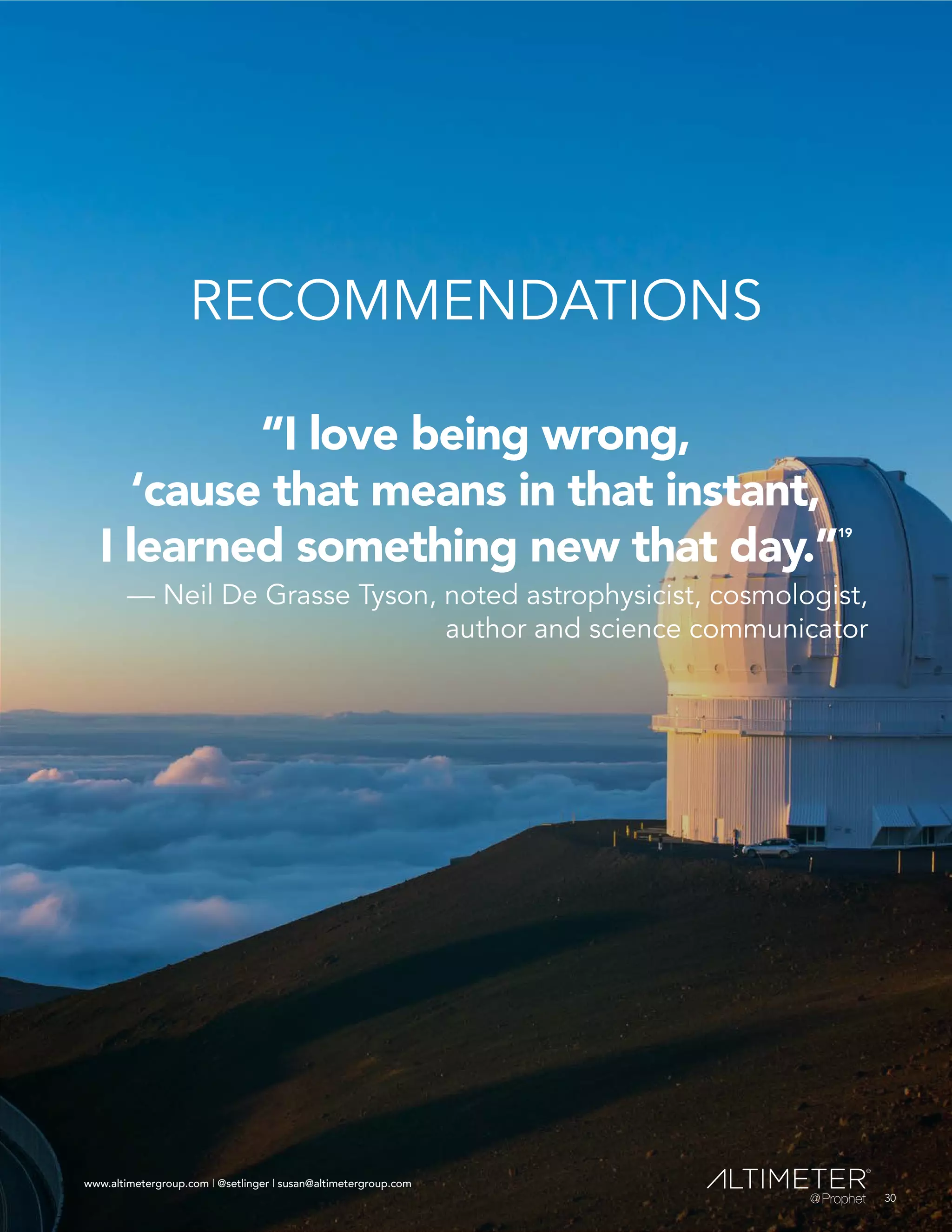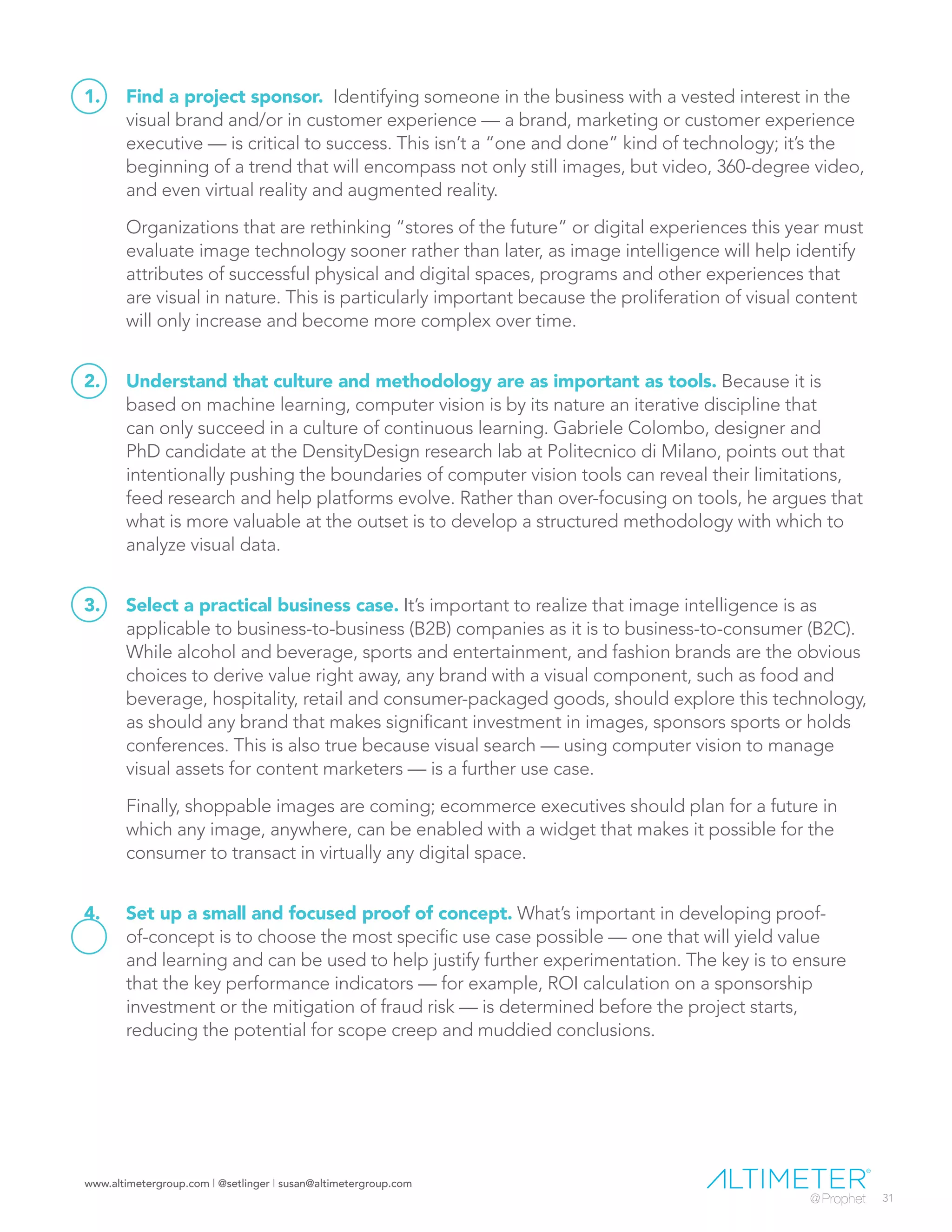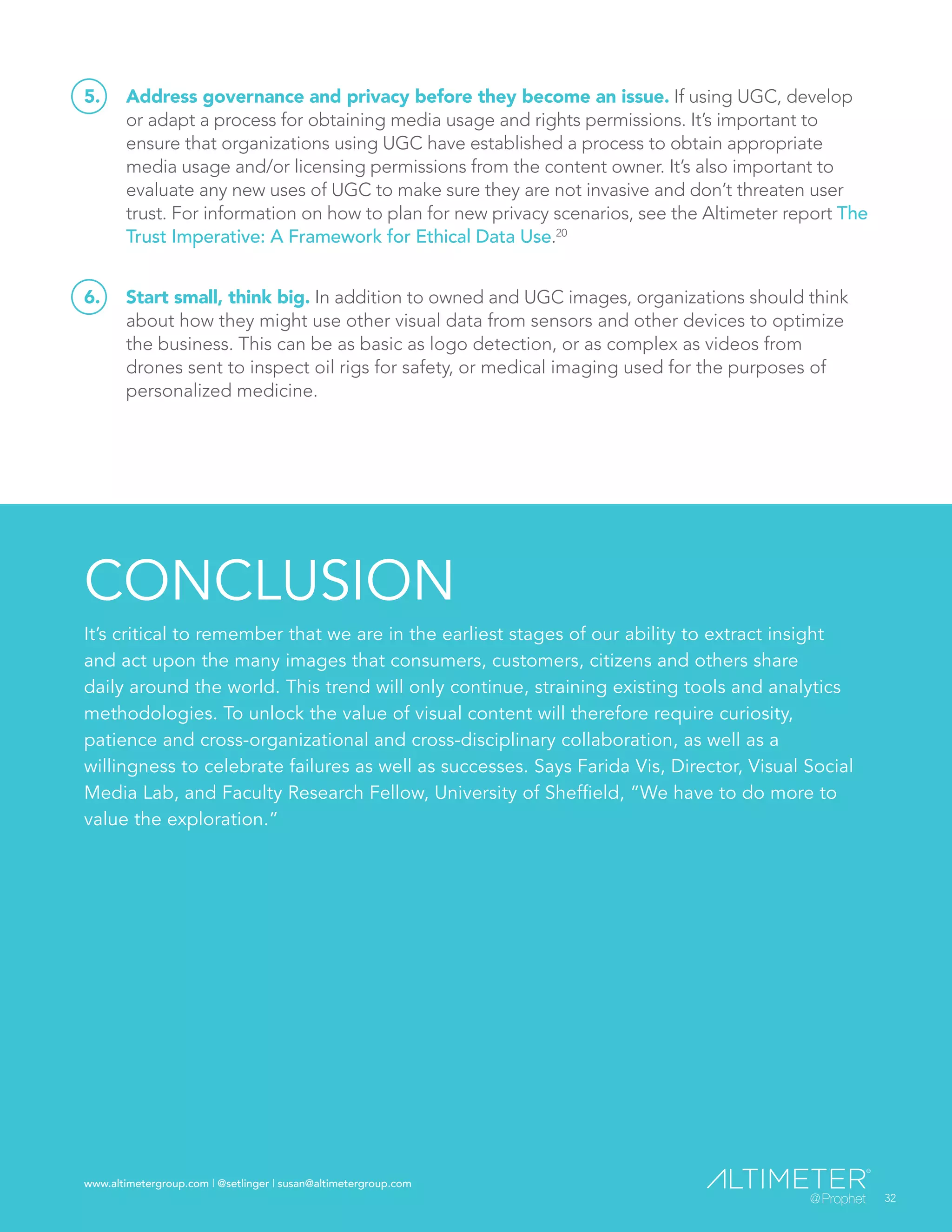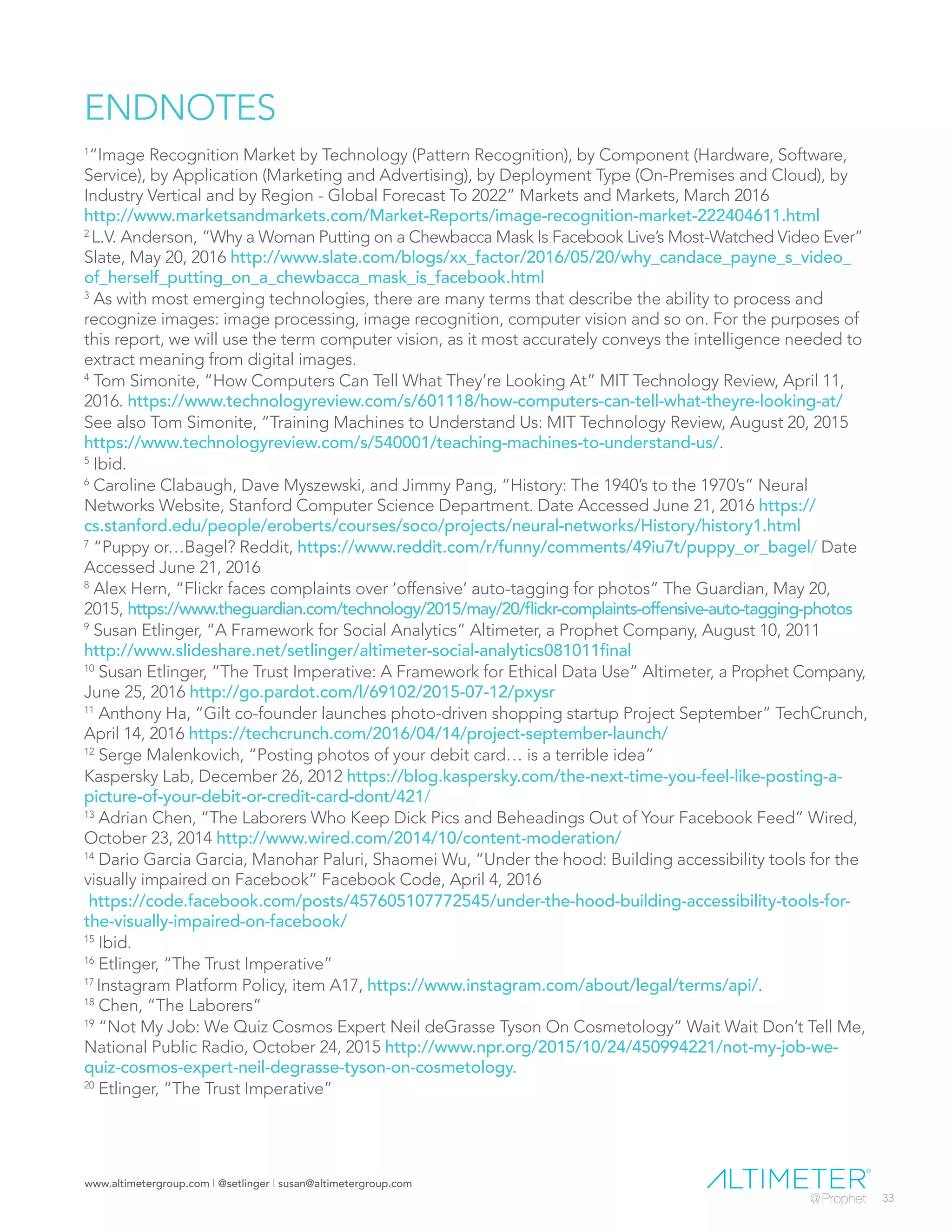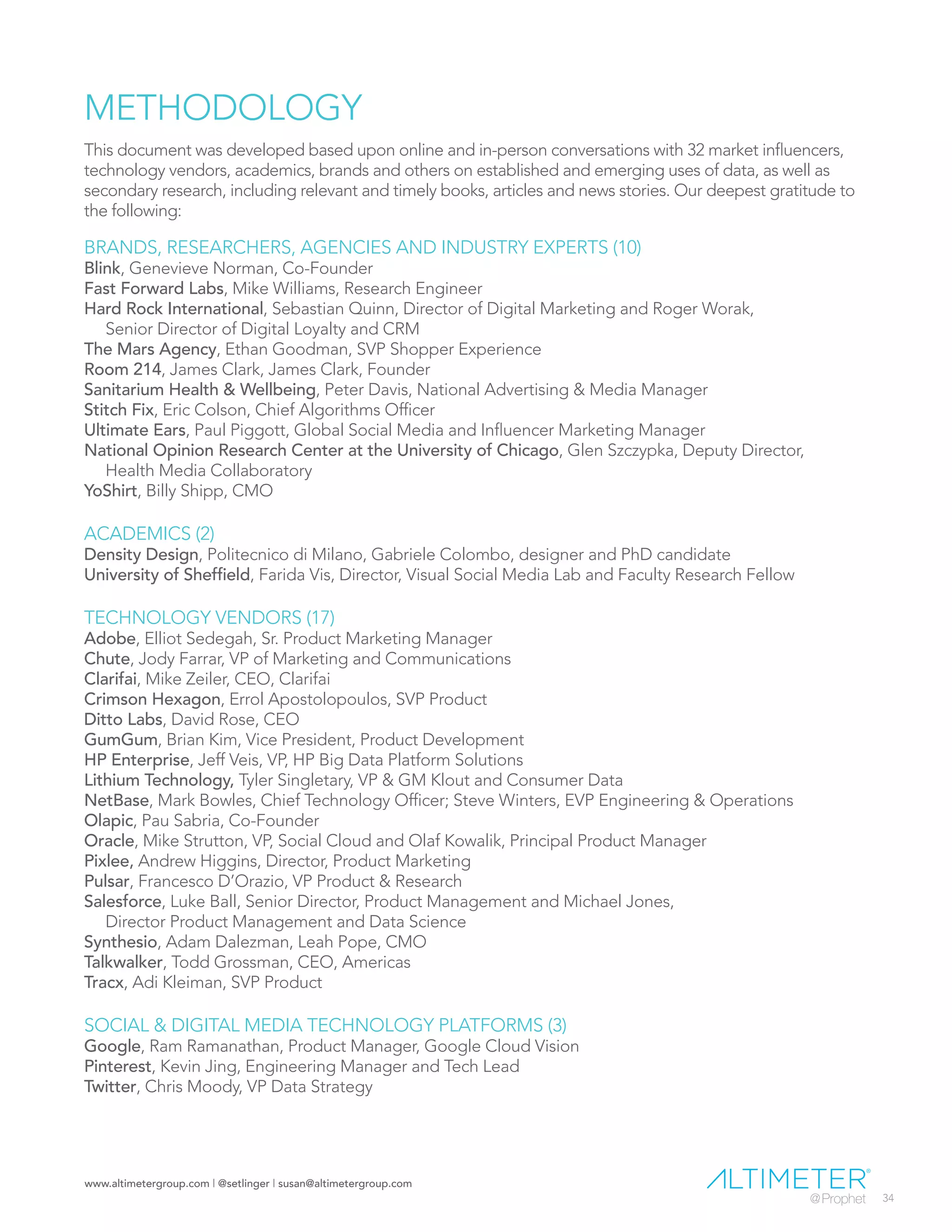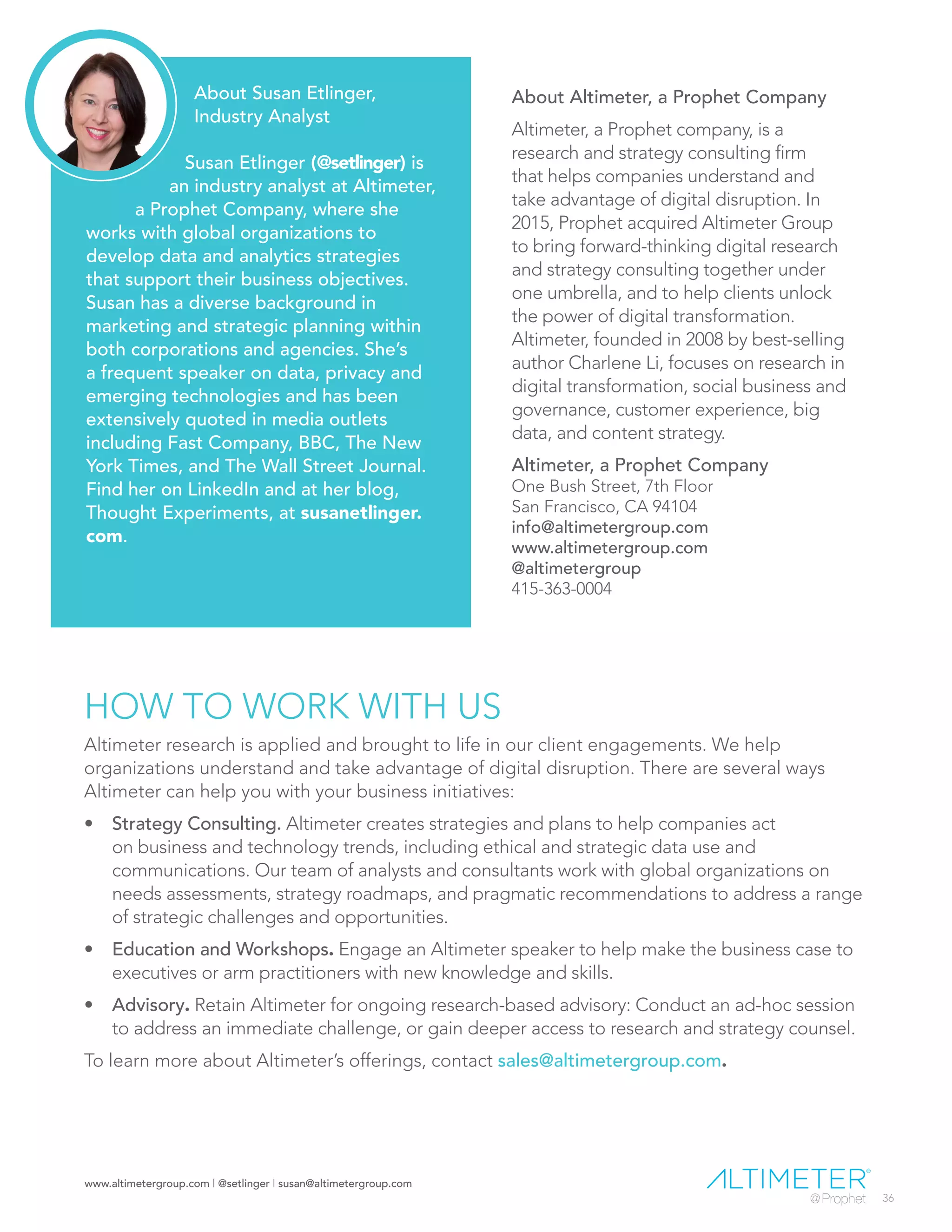The document discusses the emergence of image intelligence as a critical business tool, highlighting how brands can unlock predictive insights from visual content shared online. It emphasizes the importance of AI technologies in analyzing images, recognizing objects, and connecting these insights with other data to forecast trends. The report outlines various use cases and challenges, providing recommendations for organizations to harness the power of visual content effectively.
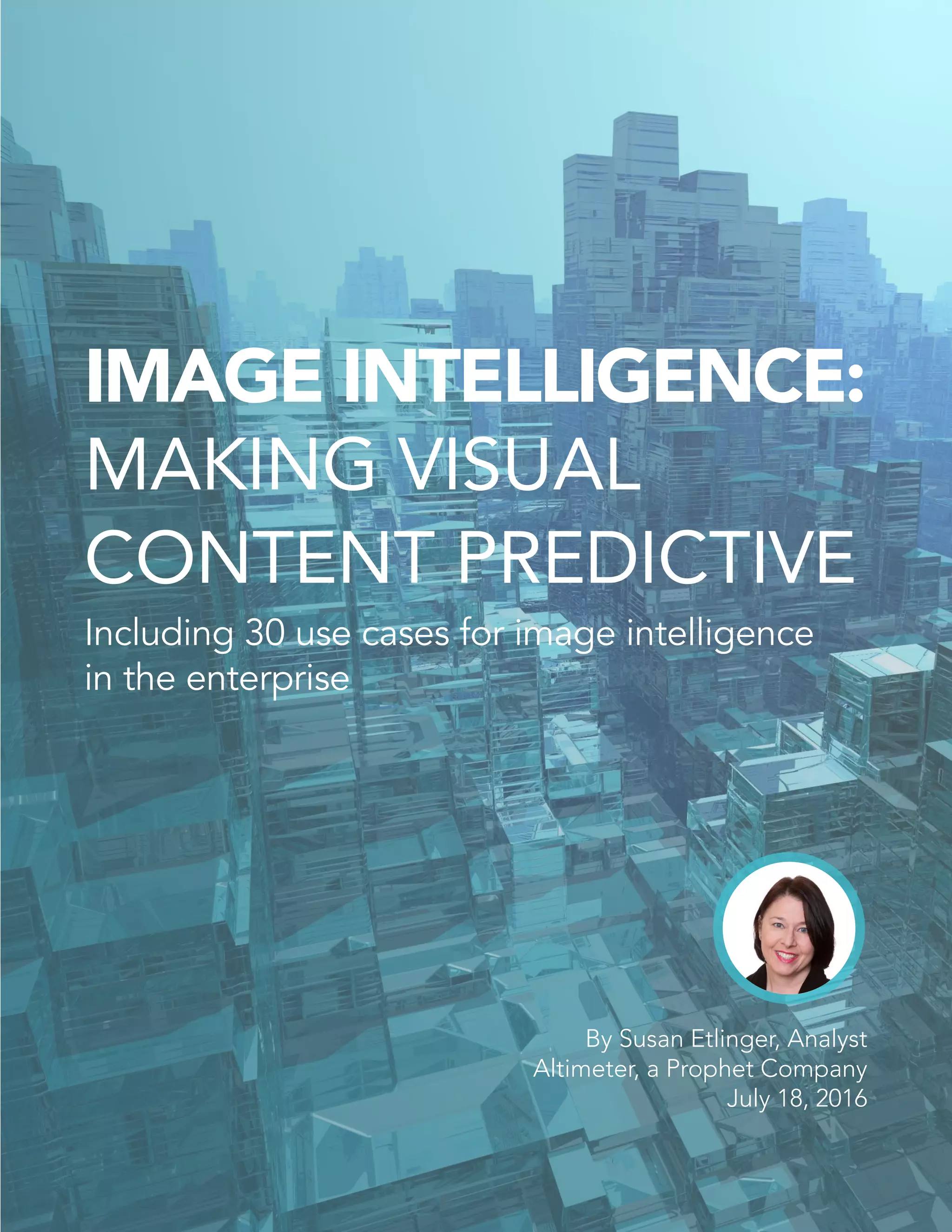
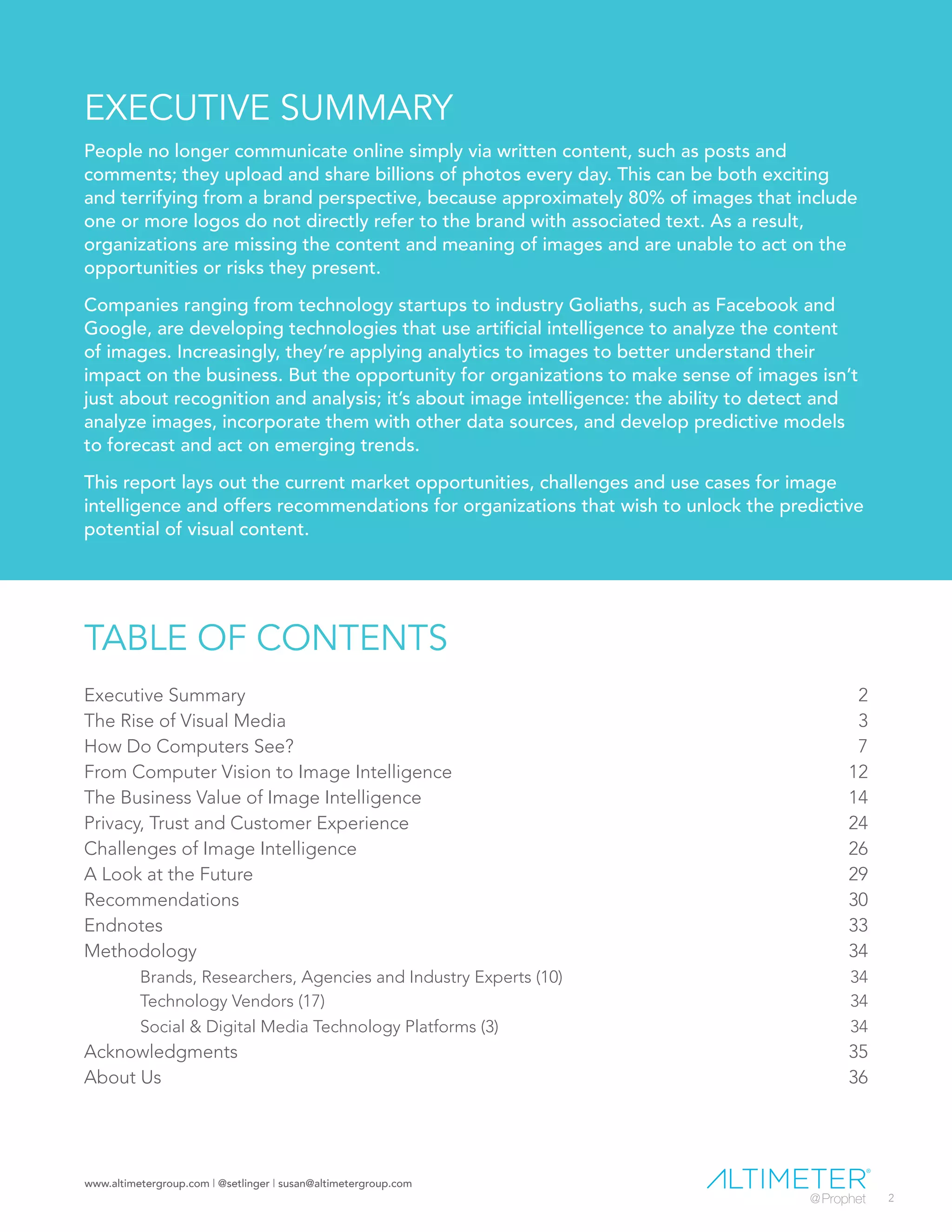
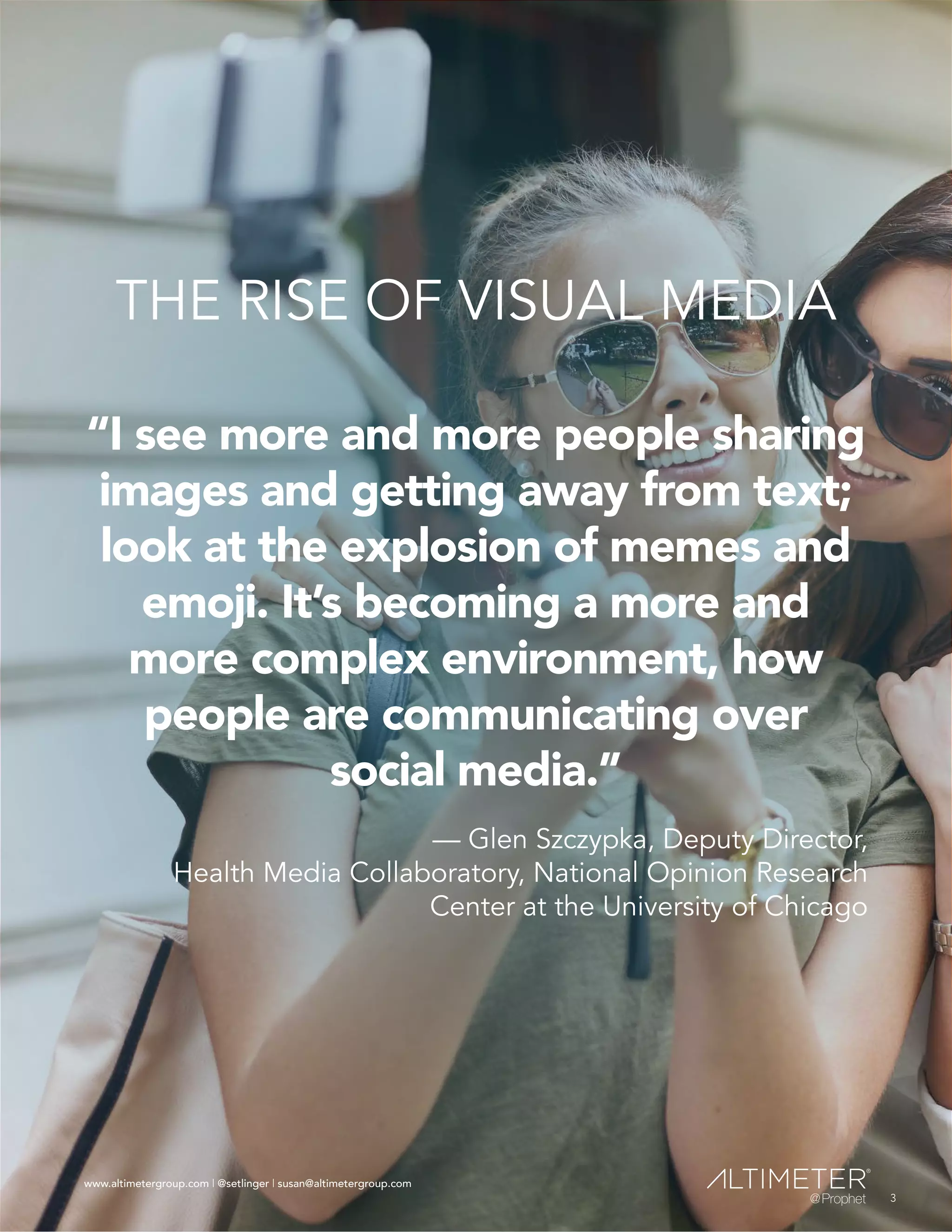
![www.altimetergroup.com | @setlinger | susan@altimetergroup.com
4
The ubiquity of smartphone cameras, combined with increasing use of social networks, has led
to an explosion in picture taking and photo sharing. According to Mary Meeker’s 2016 Internet
Trends report, people share and upload over 3 billion images every day on Facebook properties
(Facebook, Messenger, WhatsApp and Instagram) and Snapchat alone (see Figure 1).
In addition to sparking trends and conversations, photo sharing is driving technology innovation.
Markets and Markets, a research firm, expects the image-recognition market to reach nearly $30
billion by 2020, driven in large part by sharing via social media.1
Image recognition — what Gartner defines as “technologies [that] strive to identify objects,
people, buildings, places, logos, and anything else that has value to consumers and enterprises”
— is just the first step in deriving insight from and acting on images, however. The next step is to
analyze them to better understand their context and impact.
The photo on the following page provides a good example (see Figure 2).
FIGURE 1
IMAGE GROWTH REMAINS STRONG, SAYS MARY MEEKER’S INTERNET TRENDS REPORT
Source: Snapchat, Company disclosed information, KPCB estimates
Note: Snapchat data includes images and video. Snapchat stories are a compilation of images and video. WhatsApp data estimated based on
average of photos shared disclosed in Q1:15 and Q1:16. Instagram data per Instagram press release. Messenger data per Facebook (~9.5B
photos per months). Facebokk shares ~2B photos per day across Facebook, Instagram, Messenger, and WhatsApp (2015)](https://image.slidesharecdn.com/altimetervisualintelligencereport-160818155019/75/Image-Intelligence-Making-Visual-Content-Predictive-4-2048.jpg)
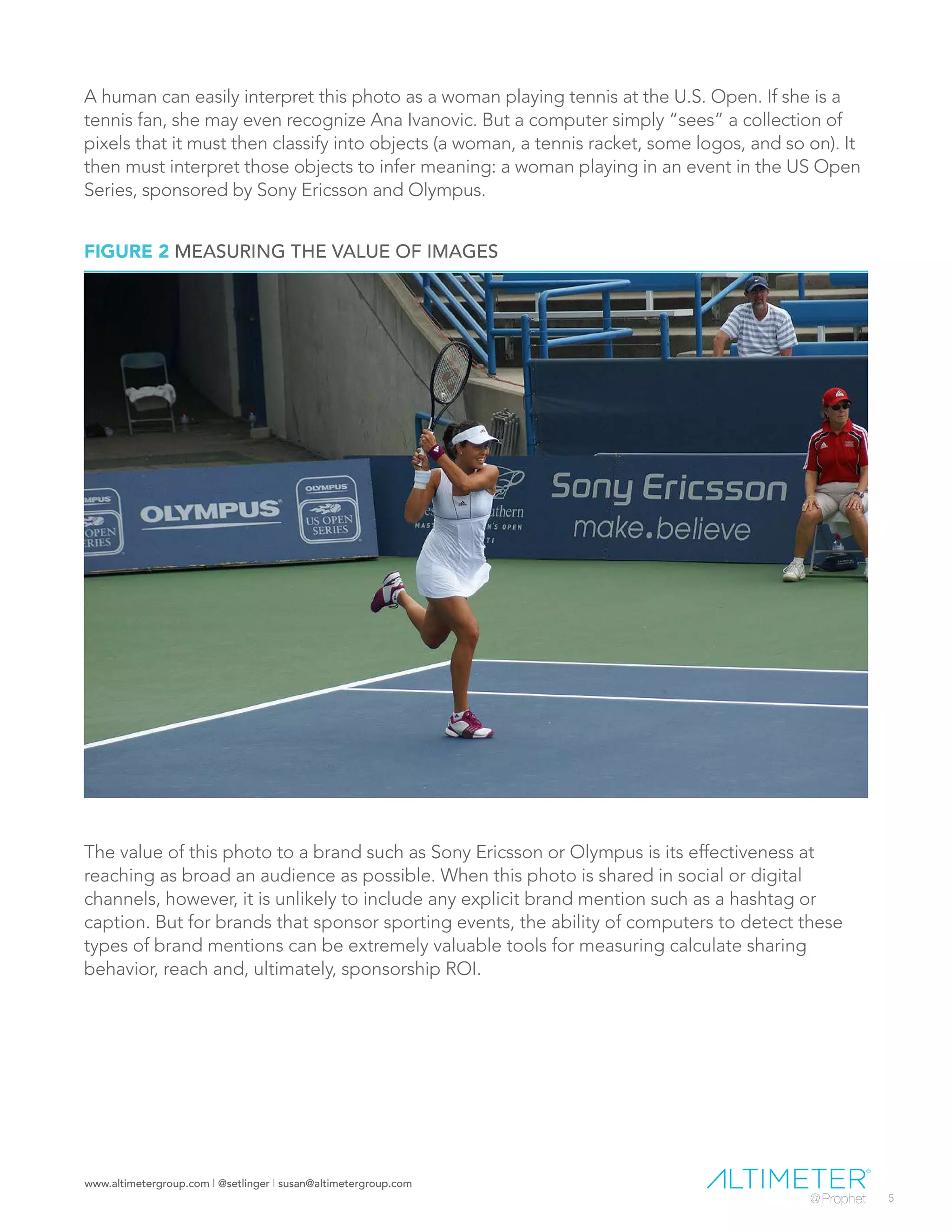
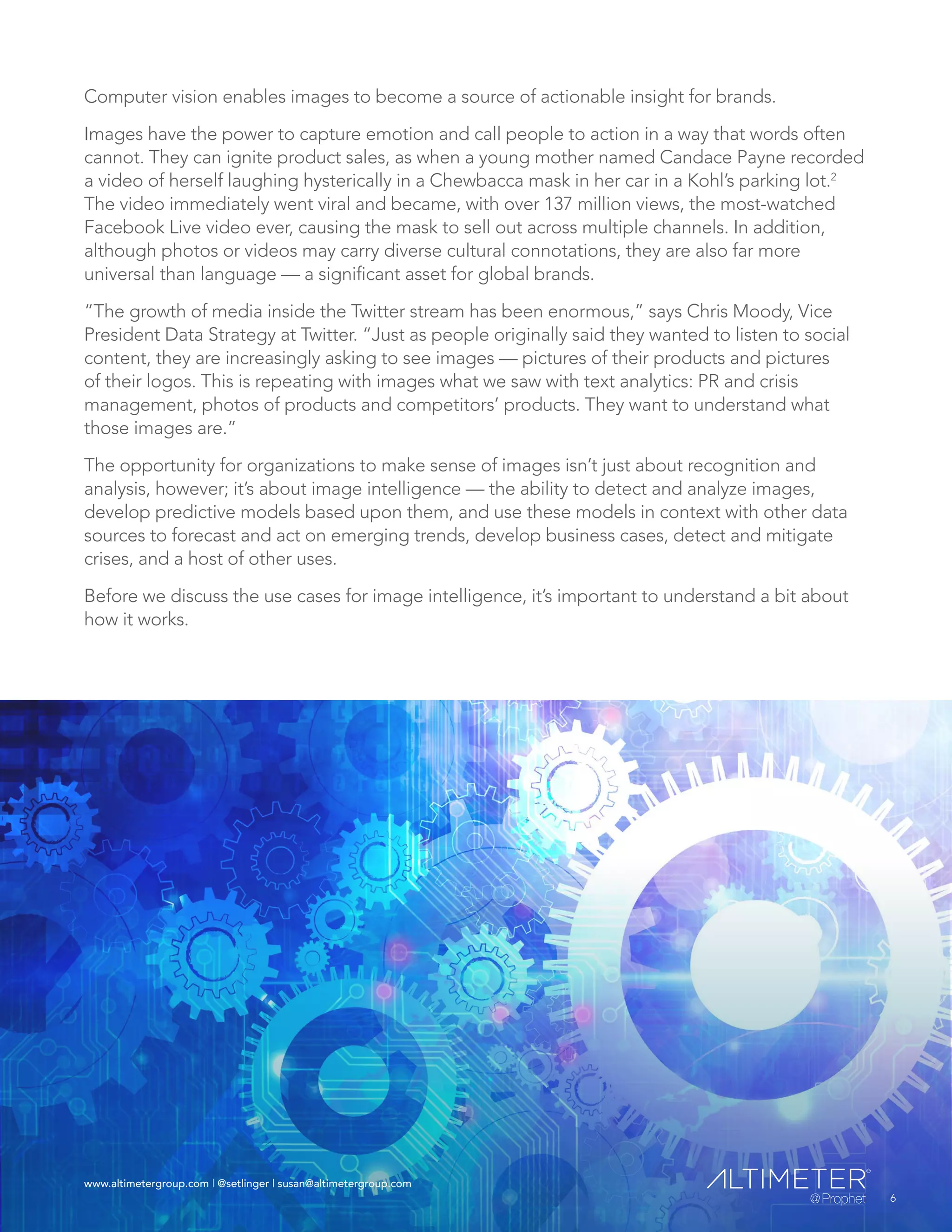
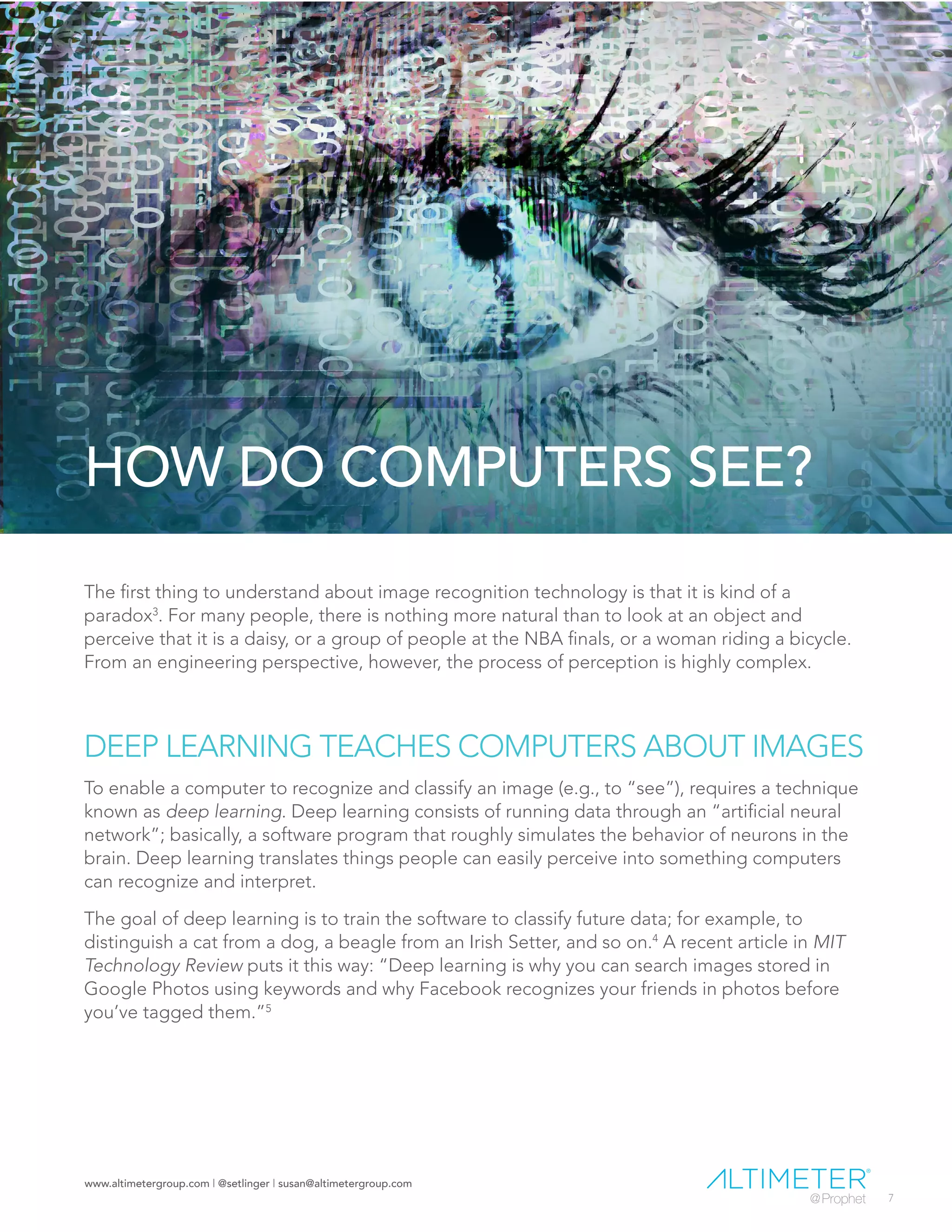
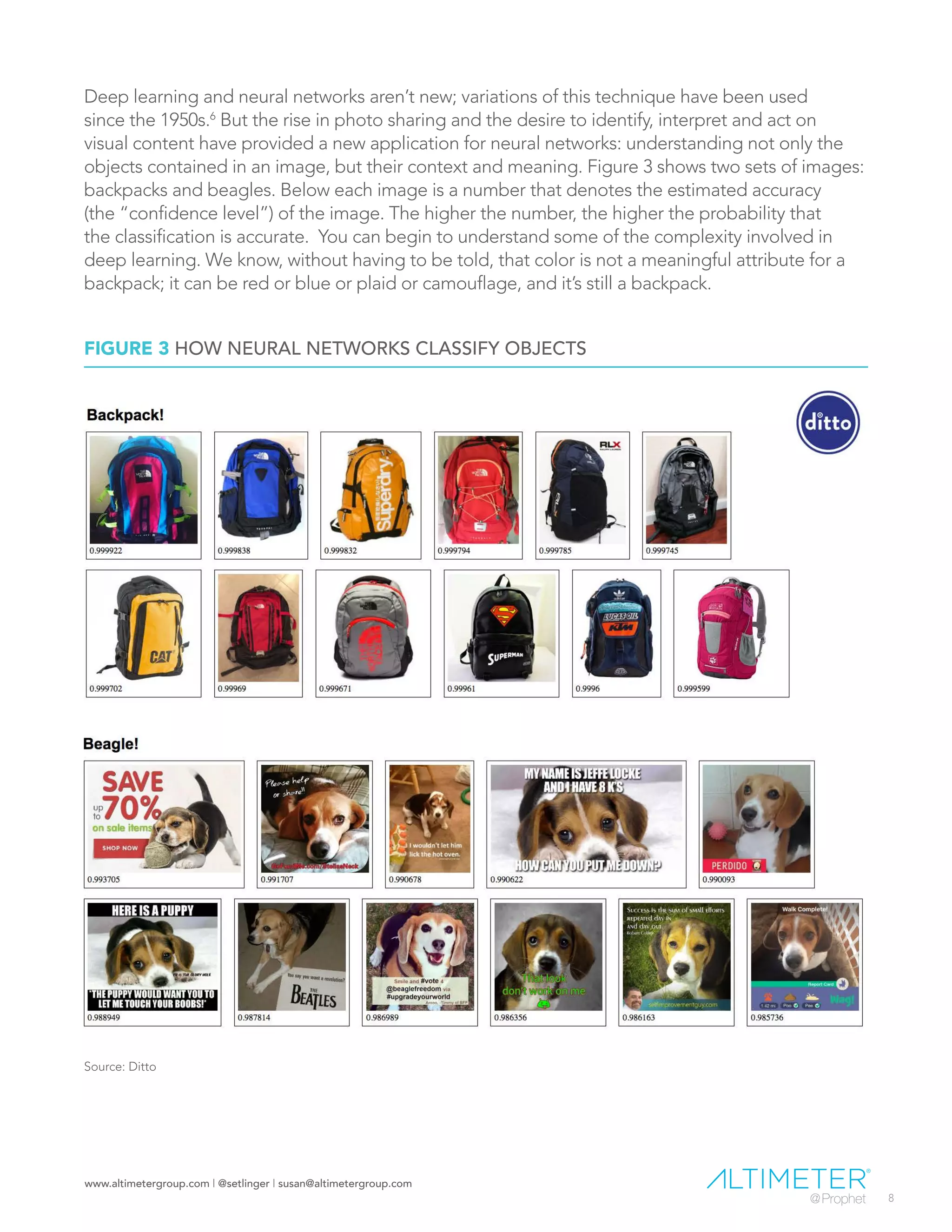
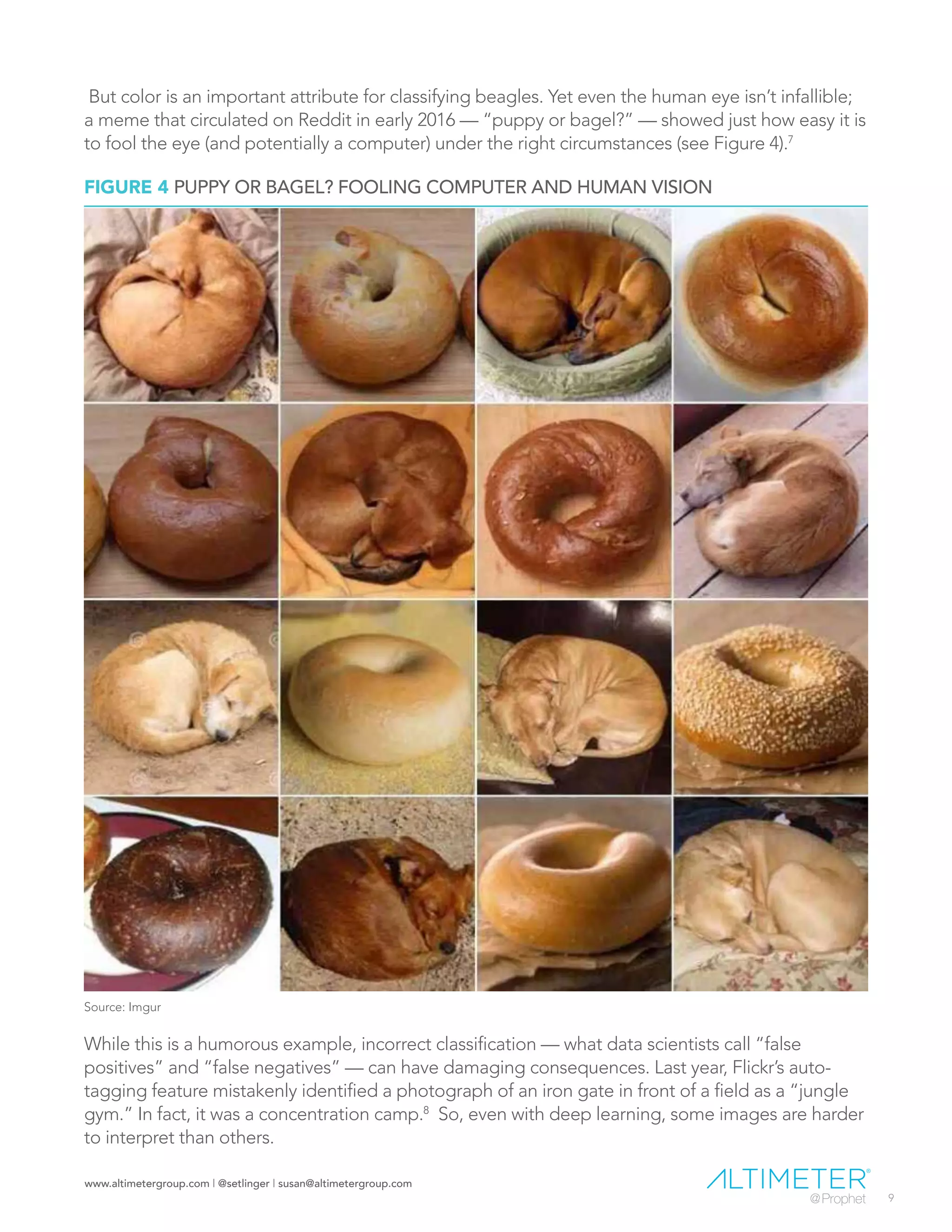
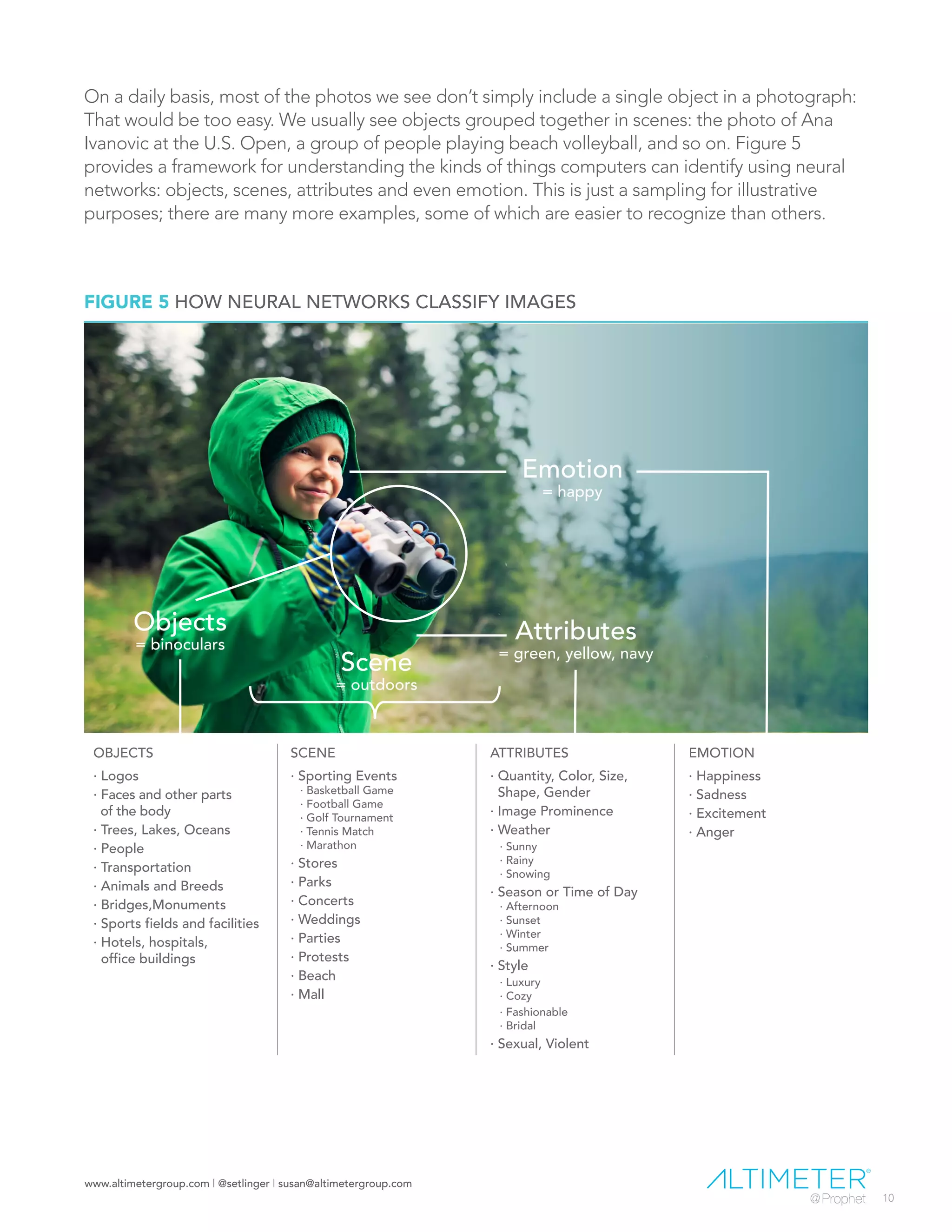
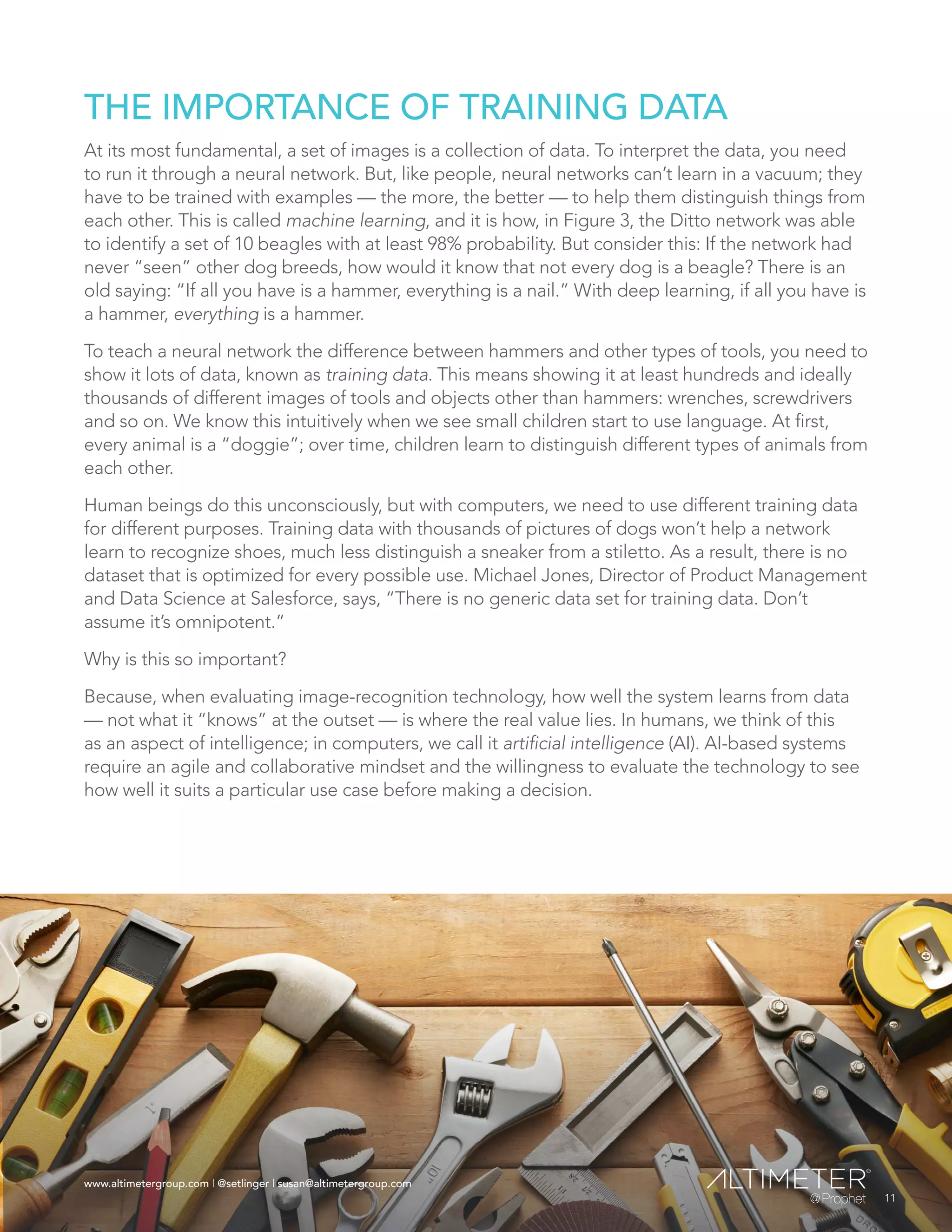

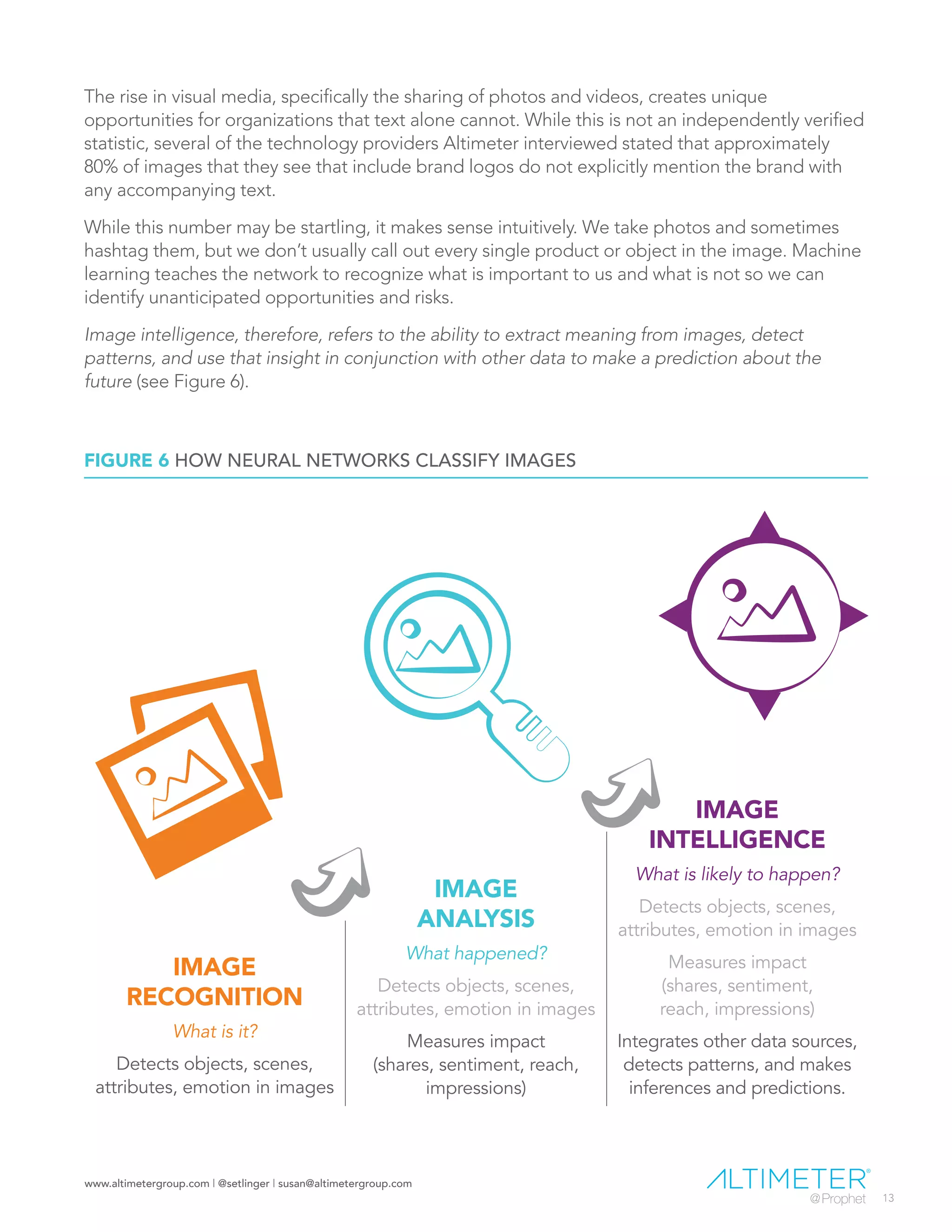
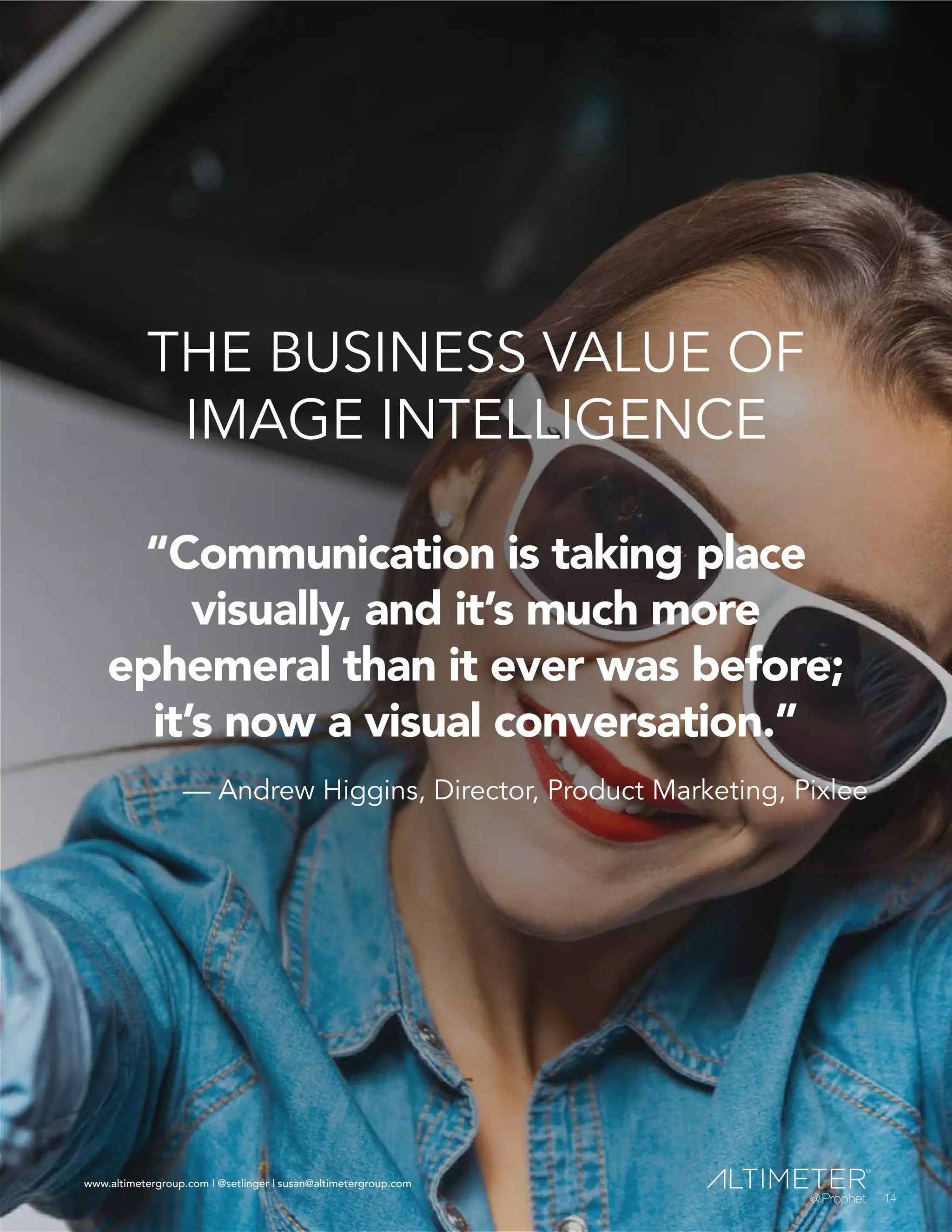
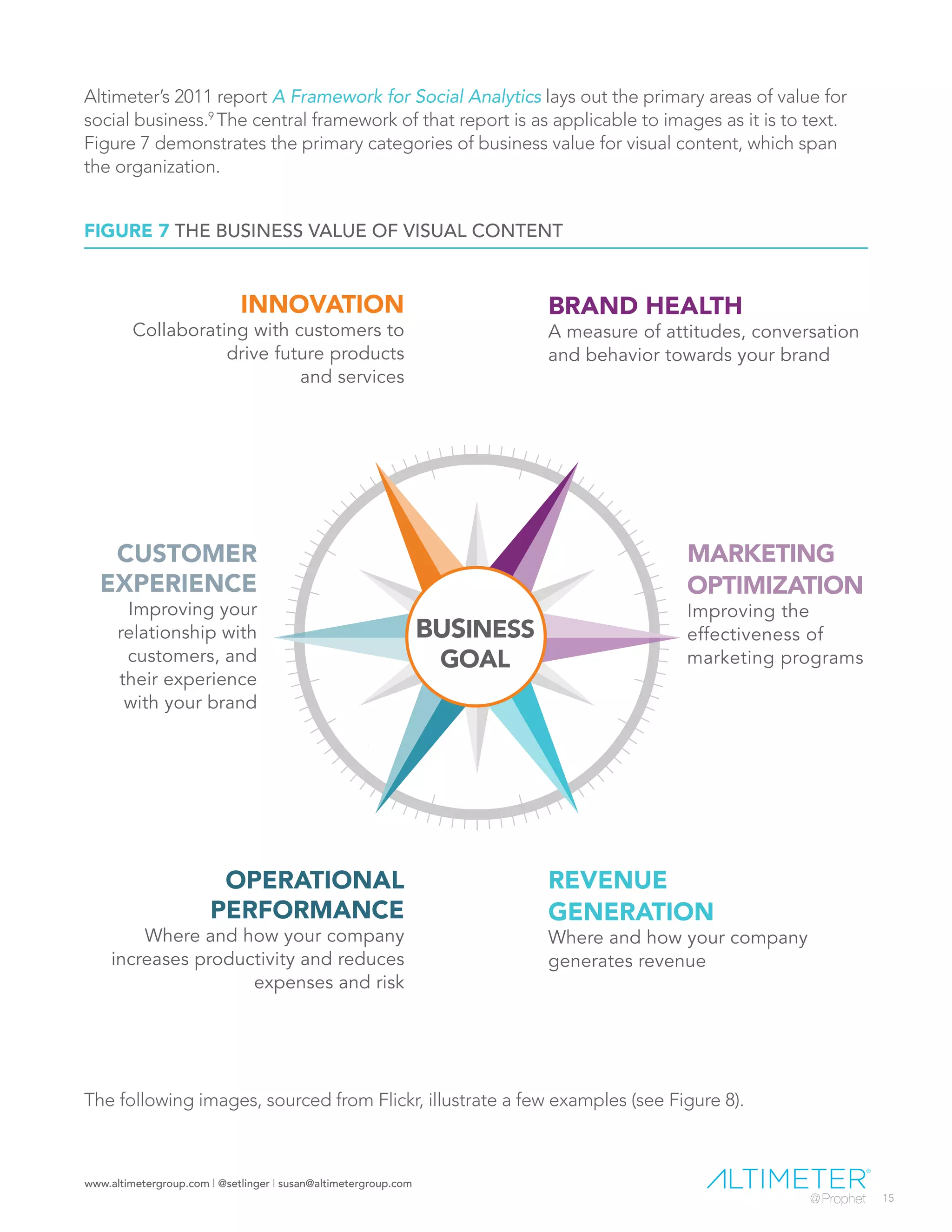
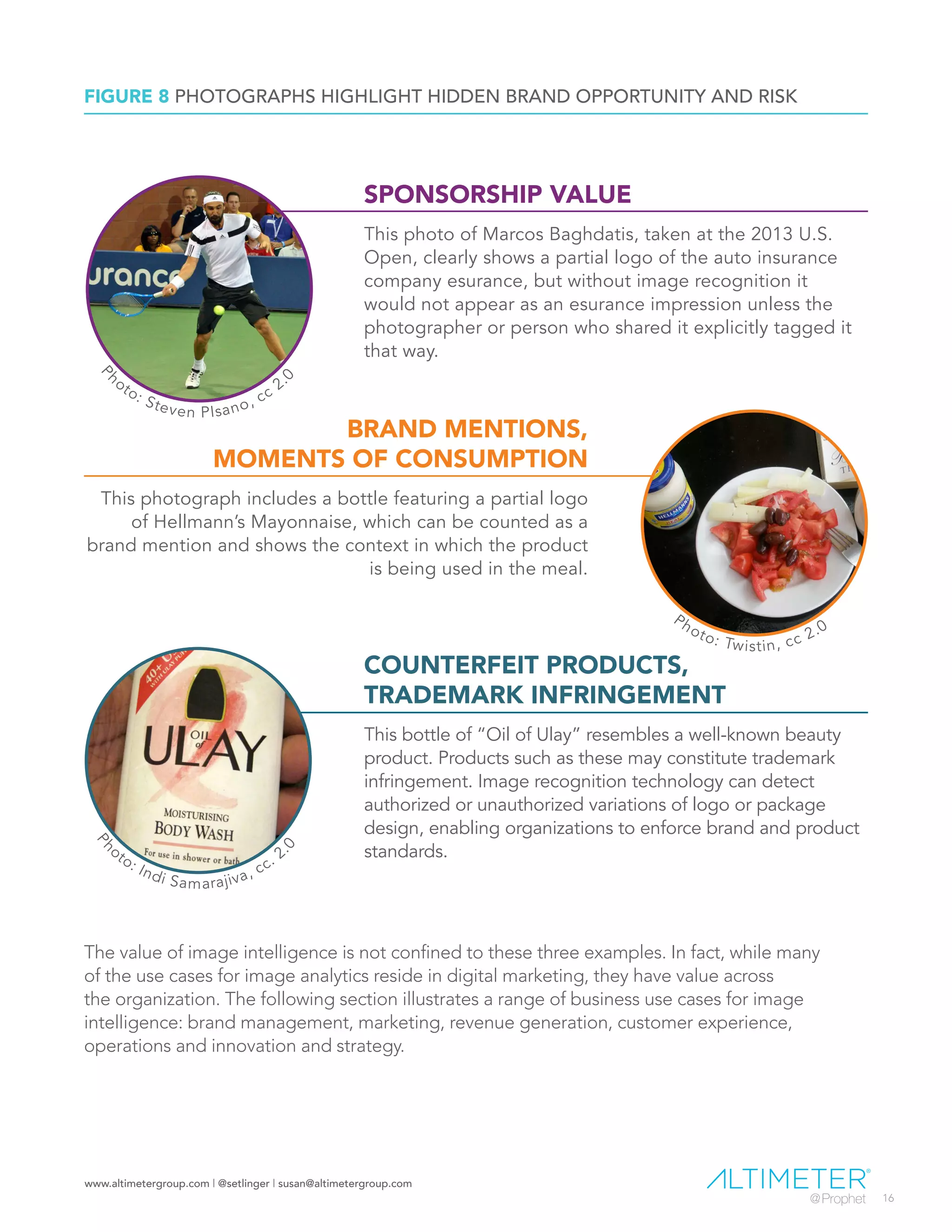
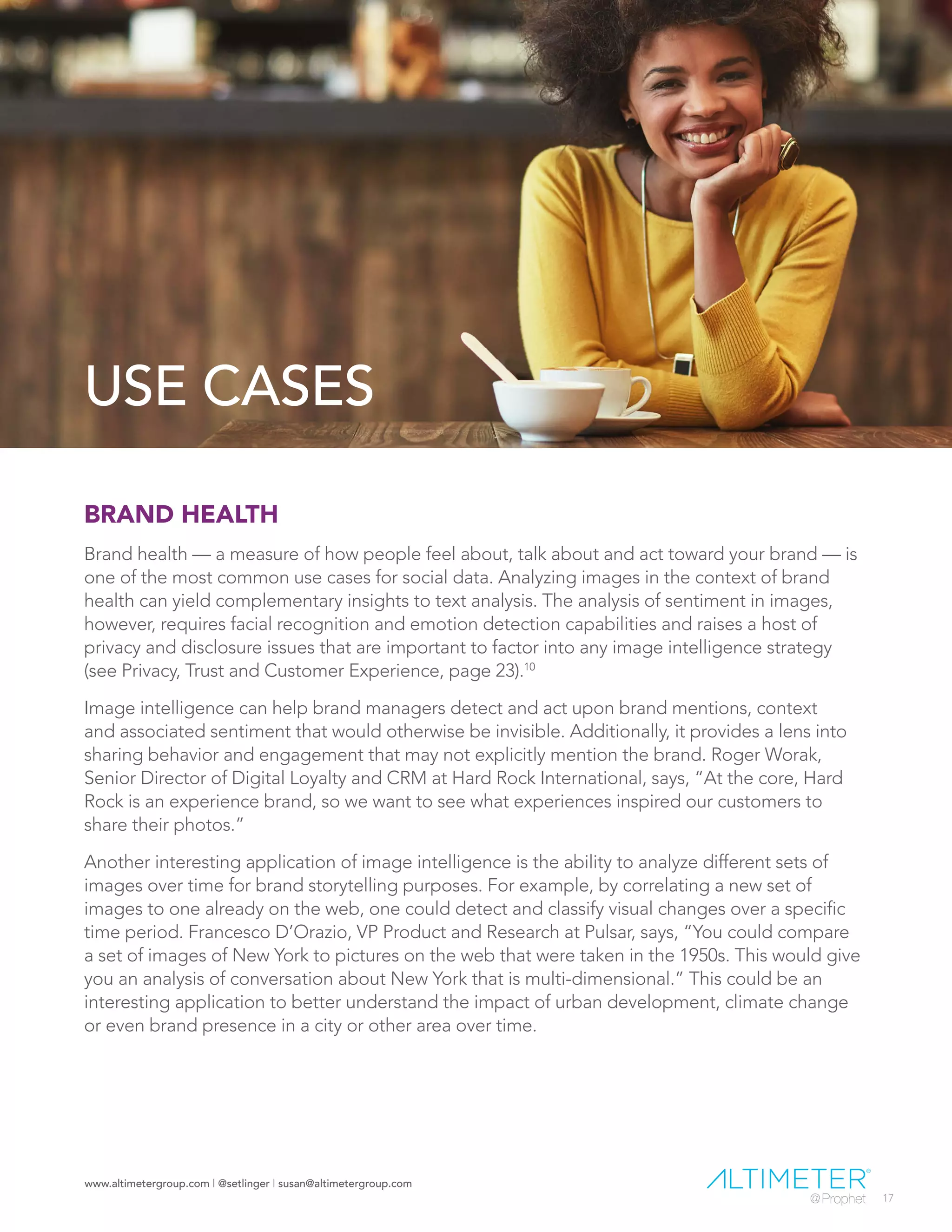
![www.altimetergroup.com | @setlinger | susan@altimetergroup.com
18
Example Description
Tracking Brand Mentions Understand when and where the brand appears in images.
Several vendors are able to detect partial or upside-down logos
in addition to non-standard logo variations. This can be used to
estimate or validate brand awareness or to measure the value of
visually oriented campaigns.
Brand Storytelling Compare images of a brand over time to identify visual changes
in the brand story.
Brand and Trademark
Compliance
Understand whether logos and brand assets are being used in
compliance with brand guidelines. Examples:
• Pharma, in which misuse of brand logo can have human/legal
consequences
• Trademark infringement
• Fake or pirated products/services
Crisis and Issues
Management
Understand how topics — whether related to one’s own brand,
other brands or external issues — may affect brand health.
Examples: environmental issues, GMO foods, product recall,
damaged shipments, disease outbreaks, political campaigns,
geopolitics.
MARKETING OPTIMIZATION
As images become even more central to marketing programs and campaigns, the ability to
detect those images when they are shared without language becomes essential to evaluating the
performance of marketing and advertising programs and, ultimately, media mix management.
This can extend from identifying moments of consumption (which foods people eat for breakfast,
what bikes they ride or cars they drive) to affinities among brands, to competitive benchmarking, to
sponsorship performance, to micro-segmentation and ad targeting. David Rose, CEO of Ditto, says
“Now you can look for these tribes of people who are into fashion, or golf, or beach vacations.”
Image analytics can also help marketers identify valuable user-generated content (UGC), making
content development more cost-effective. In the past, if companies wanted to show a customer
using the product, they’d have to shoot the image themselves. Says Paul Piggott, Global Social
Media and Influencer Marketing Manager, Ultimate Ears, “We lean into user-generated content
[UGC] and influencer content a great deal. We don’t really spend money creating content
anymore. We post UGC with the creator’s permission and attribution. We found early on that
UGC performed twice as well in terms of engagement on our social channels, so we moved to
nearly total UGC.”
FIGURE 9 BRAND HEALTH USE CASES](https://image.slidesharecdn.com/altimetervisualintelligencereport-160818155019/75/Image-Intelligence-Making-Visual-Content-Predictive-18-2048.jpg)

